Dosing & Uses
Dosage Forms & Strengths
tablet
- 81mg
- 325mg
- 500mg
tablet, delayed-release
- 162mg
- 325mg
- 500mg
tablet, chewable
- 81mg
tablet, enteric-coated
- 81mg
- 162mg
- 325mg
- 650mg
capsule, liquid-filled (Vazalore)
- 81mg
- 325mg
extended-release capsule (Durlaza [Rx])
- 162.5 mg
Pain and Fever
Immediate release: 325- 650 mg PO q4hr PRN or 975 mg PO q6hr PRN or 500-1,000 mg PO q4-6hr for no more than 10 days; not to exceed 4 g/day
Rectal: 300-600 mg PR q4hr for no more than 10 days or as directed by health care provider
Acute Coronary Syndrome
For use as adjunctive antithrombotic effects for ACS (ST-segment elevation myocardial infarction [STEMI], unstable angina [UA]/non-ST-segment elevation myocardial infarction [NSTEMI])
Acute symptoms
- 160-325 mg PO; chew nonenteric-coated tablet upon presentation (within minutes of symptoms)
- If unable to take PO, may give 300-600 mg suppository PR
Maintenance (secondary prevention)
- 81-325 mg PO qDay indefinitely (preferred dose); may give 81-325 mg/day
- Regimen may depend on coadministered drugs or comorbid conditions
- Extended-release capsule (Durlaza [Rx]): 162.5 mg PO qDay
Percutaneous transluminal coronary angioplasty
- Adjunctive aspirin therapy to support reperfusion with primary PCI (with or without fibrinolytic therapy)
- Preprocedure: 162-325 mg PO before procedure
- Postprocedure: 81 mg PO qDay indefinitely (preferred dose) may give 81-325 mg/day
- Regimen may depend on coadministered drugs or comorbid conditions
- Coadministered with ticagrelor: 81 mg PO qDay
Primary ASCVD Prevention with Low-Dose Aspirin
Adults aged 40-70 years: Consider use of low-dose aspirin (75-100 mg PO qDay) for select adults who are at higher risk for atherosclerotic cardiovascular disease (ASCVD), but not at increased bleeding risk (AHA/ACC 2019 Guidelines on Primary Prevention of Cardiovascular Disease)
Adults aged >70 years: Low-dose aspirin should not be administered on a routine basis for primary prevention of ASCVD
Any age with increased bleeding risk: Do not administer low-dose aspirin for primary prevention
Note: There may be select circumstances where clinicians might discuss prophylactic aspirin with adults aged <40 yr or >70 yr in the context of other known ASCVD risk factors (eg, strong family history of premature MI, inability to achieve lipid or BP or glucose targets, or significant elevation in coronary artery calcium score)
Ischemic Stroke & Transient Ischemic Attack
Initial: 160-325 mg PO within 48 hr of stroke/TIA onset, followed by 75-100 mg PO qDay
AHA/ASA recommends an initial dose of 325 mg within 24-48 hr after stroke; do not administer aspirin within 24 hr after administration of alteplase
Maintenance (secondary prevention)
- Extended-release capsule (Durlaza [Rx]): 162.5 mg PO qDay
Anti-Inflammatory
Use of non-aspirin NSAIDs has largely supplanted the use of aspirin for osteoarthritis, rheumatoid arthritis, and other inflammatory arthritides
Immediate release: Usual maintenance dose: 2.1-7.3 g/day in divided doses (individualize dose); monitor serum salicylate concentrations
Colorectal Cancer (Off-label)
Prophylaxis
600 mg/day PO
Decreases risk of developing hereditary colorectal cancer (ie, Lynch syndrome) by 60% if taken daily for at least 2 years
Dosing Modifications
Renal impairment
- CrCl >10 mL/min: Dose adjustment not necessary
- CrCl <10 mL/min: Not recommended
Hepatic impairment
- Severe liver disease: Not recommended
Dosage Forms & Strengths
tablet
- 81mg
- 325mg
- 500mg
tablet, delayed release
- 162mg
- 325mg
- 500mg
tablet, chewable
- 75mg
- 81mg
tablet, enteric coated
- 81mg
- 162mg
- 325mg
- 650mg
capsule, liquid-filled (Vazalore)
- 81mg
- 325mg
Pain and Fever
<50 kg
- 10-15 mg/kg PO q4hr, up to 60-80 mg/kg/day
≥50 kg
- Immediate release: 325-650 mg PO/PR q4-6hr PRN; not to exceed 4 g/day
Juvenile Rheumatoid Arthritis
<25 kg: 60-100 mg/kg/day PO divided q6-8hr (maintain serum salicylate at 150-300 mcg/mL)
≥25 kg: 2.4-3.6 g/day
Kawasaki Disease
Febrile phase: 80-100 mg/kg/day PO divided q6hr for up to 14 days (48-72 hours after fever defervescence)
Maintenance: 3-6 mg/kg/day PO in single dose
Interactions
Interaction Checker
No Results

Contraindicated
Serious - Use Alternative
Significant - Monitor Closely
Minor

Contraindicated (3)
- abrocitinib
abrocitinib and aspirin both increase anticoagulation. Contraindicated. Antiplatelet drugs, except for low-dose aspirin (=81 mg qDay), during the first 3 months of treatment are contraindicated.
- dichlorphenamide
dichlorphenamide increases levels of aspirin by unknown mechanism. Contraindicated. Coadministration of dichlorphenamide with high-dose aspirin may increase salicylate levels. Anorexia, tachypnea, lethargy, and coma reported.
- mifepristone
aspirin, mifepristone. Other (see comment). Contraindicated. Comment: Aspirin induced antiplatelet activity may induce excessive bleeding after an abortion w/mifepristone (RU 486).
Serious - Use Alternative (25)
- benazepril
aspirin, benazepril. pharmacodynamic antagonism. Avoid or Use Alternate Drug. Coadministration may result in a significant decrease in renal function. NSAIDs may diminish the antihypertensive effect of ACE inhibitors. The mechanism of these interactions is likely related to the ability of NSAIDs to reduce the synthesis of vasodilating renal prostaglandins.
- caplacizumab
caplacizumab, aspirin. Either increases effects of the other by pharmacodynamic synergism. Avoid or Use Alternate Drug.
- captopril
aspirin, captopril. pharmacodynamic antagonism. Avoid or Use Alternate Drug. Coadministration may result in a significant decrease in renal function. NSAIDs may diminish the antihypertensive effect of ACE inhibitors. The mechanism of these interactions is likely related to the ability of NSAIDs to reduce the synthesis of vasodilating renal prostaglandins.
- enalapril
aspirin, enalapril. pharmacodynamic antagonism. Avoid or Use Alternate Drug. Coadministration may result in a significant decrease in renal function. NSAIDs may diminish the antihypertensive effect of ACE inhibitors. The mechanism of these interactions is likely related to the ability of NSAIDs to reduce the synthesis of vasodilating renal prostaglandins.
- fosinopril
aspirin, fosinopril. pharmacodynamic antagonism. Avoid or Use Alternate Drug. Coadministration may result in a significant decrease in renal function. NSAIDs may diminish the antihypertensive effect of ACE inhibitors. The mechanism of these interactions is likely related to the ability of NSAIDs to reduce the synthesis of vasodilating renal prostaglandins.
- ibuprofen
ibuprofen decreases effects of aspirin by Other (see comment). Avoid or Use Alternate Drug. Comment: Ibuprofen decreases the antiplatelet effects of low-dose aspirin by blocking the active site of platelet cyclooxygenase. Administer ibuprofen 8 h before aspirin or at least 2-4 h after aspirin. The effect of other NSAIDs on aspirin is not established.
ibuprofen increases toxicity of aspirin by anticoagulation. Avoid or Use Alternate Drug. increases risk of bleeding. - ibuprofen IV
ibuprofen IV increases toxicity of aspirin by anticoagulation. Avoid or Use Alternate Drug. increases risk of bleeding.
ibuprofen IV decreases effects of aspirin by Other (see comment). Avoid or Use Alternate Drug. Comment: Ibuprofen decreases the antiplatelet effects of low-dose aspirin by blocking the active site of platelet cyclooxygenase. Administer ibuprofen 8 h before aspirin or at least 2-4 h after aspirin. The effect of other NSAIDs on aspirin is not established. - ketorolac
aspirin, ketorolac. Either increases toxicity of the other by pharmacodynamic synergism. Contraindicated.
- ketorolac intranasal
aspirin, ketorolac intranasal. Either increases toxicity of the other by pharmacodynamic synergism. Contraindicated.
- lesinurad (DSC)
aspirin decreases effects of lesinurad (DSC) by unspecified interaction mechanism. Avoid or Use Alternate Drug. Aspirin at doses >325 mg/day may decrease lesinurad efficacy. Aspirin doses 325 mg/day or less (ie, for cardiovascular event prophylaxis) does not decrease lesinurad efficacy and can be coadministered.
- lisinopril
aspirin, lisinopril. pharmacodynamic antagonism. Avoid or Use Alternate Drug. Coadministration may result in a significant decrease in renal function. NSAIDs may diminish the antihypertensive effect of ACE inhibitors. The mechanism of these interactions is likely related to the ability of NSAIDs to reduce the synthesis of vasodilating renal prostaglandins.
- macimorelin
aspirin, macimorelin. unspecified interaction mechanism. Avoid or Use Alternate Drug. Drugs that directly affect the pituitary secretion of growth hormone (GH) may impact the accuracy of the macimorelin diagnostic test. Allow sufficient washout time of drugs affecting GH release before administering macimorelin. .
- measles, mumps, rubella and varicella vaccine, live
aspirin, measles, mumps, rubella and varicella vaccine, live. Mechanism: unspecified interaction mechanism. Avoid or Use Alternate Drug. Risk of Reye's Syndrome with combination; avoid salicylate use for 6 wks after vaccination.
- methotrexate
aspirin increases levels of methotrexate by decreasing renal clearance. Avoid or Use Alternate Drug. Caution should be exercised when salicylates are given in combination with methotrexate. Risk for drug interactions with methotrexate is greatest during high-dose methotrexate therapy, it has been recommended that any of these drugs be used cautiously with methotrexate even when methotrexate is used in low doses.
- mifepristone
aspirin will decrease the level or effect of mifepristone by affecting hepatic/intestinal enzyme CYP3A4 metabolism. Avoid or Use Alternate Drug.
- mitotane
aspirin will decrease the level or effect of mitotane by affecting hepatic/intestinal enzyme CYP3A4 metabolism. Avoid or Use Alternate Drug.
- moexipril
aspirin, moexipril. pharmacodynamic antagonism. Avoid or Use Alternate Drug. Coadministration may result in a significant decrease in renal function. NSAIDs may diminish the antihypertensive effect of ACE inhibitors. The mechanism of these interactions is likely related to the ability of NSAIDs to reduce the synthesis of vasodilating renal prostaglandins.
- pemetrexed
aspirin increases levels of pemetrexed by unspecified interaction mechanism. Avoid or Use Alternate Drug. Interrupt dosing in all patients taking NSAIDs with long elimination half-lives for at least 5d before, the day of, and 2d following pemetrexed administration. If coadministration of an NSAID is necessary, closely monitor patients for toxicity, especially myelosuppression, renal toxicity, and GI toxicity.
- perindopril
aspirin, perindopril. pharmacodynamic antagonism. Avoid or Use Alternate Drug. Coadministration may result in a significant decrease in renal function. NSAIDs may diminish the antihypertensive effect of ACE inhibitors. The mechanism of these interactions is likely related to the ability of NSAIDs to reduce the synthesis of vasodilating renal prostaglandins.
- probenecid
aspirin decreases effects of probenecid by acidic (anionic) drug competition for renal tubular clearance. Avoid or Use Alternate Drug. Aspirin decreases uricosuric action of probenecid.
- quinapril
aspirin, quinapril. pharmacodynamic antagonism. Avoid or Use Alternate Drug. Coadministration may result in a significant decrease in renal function. NSAIDs may diminish the antihypertensive effect of ACE inhibitors. The mechanism of these interactions is likely related to the ability of NSAIDs to reduce the synthesis of vasodilating renal prostaglandins.
- ramipril
aspirin, ramipril. pharmacodynamic antagonism. Avoid or Use Alternate Drug. Coadministration may result in a significant decrease in renal function. NSAIDs may diminish the antihypertensive effect of ACE inhibitors. The mechanism of these interactions is likely related to the ability of NSAIDs to reduce the synthesis of vasodilating renal prostaglandins.
- ticlopidine
aspirin increases effects of ticlopidine by pharmacodynamic synergism. Avoid or Use Alternate Drug. Enhanced risk of hemorrhage.
- trandolapril
aspirin, trandolapril. pharmacodynamic antagonism. Avoid or Use Alternate Drug. Coadministration may result in a significant decrease in renal function. NSAIDs may diminish the antihypertensive effect of ACE inhibitors. The mechanism of these interactions is likely related to the ability of NSAIDs to reduce the synthesis of vasodilating renal prostaglandins.
- varicella virus vaccine live
aspirin, varicella virus vaccine live. Mechanism: unspecified interaction mechanism. Avoid or Use Alternate Drug. Risk of Reye's Syndrome with combination; avoid salicylate use for 6 wks after vaccination.
Monitor Closely (267)
- abciximab
aspirin, abciximab. Either increases toxicity of the other by anticoagulation. Use Caution/Monitor. The need for simultaneous use of low-dose aspirin and anticoagulant or antiplatelet agents are common for patients with cardiovascular disease; monitor closely.
- acalabrutinib
acalabrutinib increases effects of aspirin by anticoagulation. Modify Therapy/Monitor Closely. Coadministration of acalabrutinib with antiplatelets or anticoagulants may further increase risk of hemorrhage. Monitor for signs of bleeding and consider the benefit-risk of withholding acalabrutinib for 3-7 days presurgery and postsurgery depending upon the type of surgery and the risk of bleeding.
- acebutolol
acebutolol and aspirin both increase serum potassium. Use Caution/Monitor.
aspirin decreases effects of acebutolol by pharmacodynamic antagonism. Use Caution/Monitor. Long term (>1 wk) NSAID use. NSAIDs decrease prostaglandin synthesis. - aceclofenac
aceclofenac and aspirin both increase anticoagulation. Use Caution/Monitor.
aceclofenac and aspirin both increase serum potassium. Use Caution/Monitor. - acemetacin
acemetacin and aspirin both increase anticoagulation. Use Caution/Monitor.
acemetacin and aspirin both increase serum potassium. Use Caution/Monitor. - acetazolamide
acetazolamide, aspirin. Either increases levels of the other by Other (see comment). Use Caution/Monitor. Comment: Carbonic anhydrase inhibitors (CAIs) and salicylates inhibit each other's renal tubular secretion, resulting in increased plasma levels. CAIs also shift salicylates from plasma to the CNS, leading to potential neurotoxicity.
acetazolamide, aspirin. Mechanism: passive renal tubular reabsorption due to increased pH. Use Caution/Monitor. Salicylate levels increased at moderate doses; risk of CNS toxicity. Salicylate levels decreased at large doses (d/t increased renal excretion of unchanged salicylic acid). - agrimony
aspirin and agrimony both increase anticoagulation. Use Caution/Monitor.
- albuterol
aspirin increases and albuterol decreases serum potassium. Effect of interaction is not clear, use caution. Use Caution/Monitor.
- alfalfa
aspirin and alfalfa both increase anticoagulation. Use Caution/Monitor.
- alfuzosin
aspirin decreases effects of alfuzosin by pharmacodynamic antagonism. Use Caution/Monitor. NSAIDs decrease prostaglandin synthesis.
- aliskiren
aspirin will decrease the level or effect of aliskiren by Other (see comment). Use Caution/Monitor. In patients who are elderly, volume-depleted (including those on diuretic therapy), or with compromised renal function, coadministration of NSAIDs with drugs that affect RAAS may increase the risk of renal impairment (including acute renal failure) and cause loss of antihypertensive effect. Monitor renal function periodically.
- alteplase
aspirin, alteplase. Either increases toxicity of the other by anticoagulation. Use Caution/Monitor. The need for simultaneous use of low-dose aspirin and anticoagulant or antiplatelet agents are common for patients with cardiovascular disease; monitor closely.
- American ginseng
aspirin and American ginseng both increase anticoagulation. Use Caution/Monitor.
- amiloride
amiloride and aspirin both increase serum potassium. Modify Therapy/Monitor Closely.
- amoxicillin
amoxicillin, aspirin. Either increases levels of the other by plasma protein binding competition. Use Caution/Monitor.
amoxicillin, aspirin. Either increases levels of the other by decreasing renal clearance. Use Caution/Monitor. - ampicillin
ampicillin, aspirin. Either increases levels of the other by plasma protein binding competition. Use Caution/Monitor.
- anagrelide
aspirin, anagrelide. Either increases toxicity of the other by pharmacodynamic synergism. Use Caution/Monitor. The need for simultaneous use of low-dose aspirin and anticoagulant or antiplatelet agents are common for patients with cardiovascular disease; increases risk of bleeding; monitor closely.
anagrelide, aspirin. Either increases toxicity of the other by Mechanism: pharmacodynamic synergism. Use Caution/Monitor. The need for simultaneous use of low-dose aspirin and anticoagulant or antiplatelet agents are common for patients with cardiovascular disease; increases risk of bleeding; monitor closely. - antithrombin alfa
antithrombin alfa and aspirin both increase anticoagulation. Modify Therapy/Monitor Closely.
aspirin, antithrombin alfa. Either increases toxicity of the other by anticoagulation. Use Caution/Monitor. The need for simultaneous use of low-dose aspirin and anticoagulant or antiplatelet agents are common for patients with cardiovascular disease; monitor closely. - antithrombin III
antithrombin III and aspirin both increase anticoagulation. Modify Therapy/Monitor Closely.
aspirin, antithrombin III. Either increases toxicity of the other by anticoagulation. Use Caution/Monitor. The need for simultaneous use of low-dose aspirin and anticoagulant or antiplatelet agents are common for patients with cardiovascular disease; monitor closely. - apixaban
aspirin and apixaban both increase anticoagulation. Modify Therapy/Monitor Closely. Both drugs have the potential to cause bleeding. The need for simultaneous use of low-dose aspirin (<100 mg/day) with anticoagulants are common for patients with cardiovascular disease, but may result in increased bleeding; monitor closely. Promptly evaluate any signs or symptoms of blood loss if treated concomitantly with low-dose aspiriin. Avoid coadministration with chronic use of higher dose aspirin. In 1 trial (APPRAISE-2), therapy was terminated because of significantly increased bleeding when apixaban was administered with dual antiplatelet therapy (eg, aspirin plus clopidogrel) compared with single antiplatelet treatment
- arformoterol
aspirin increases and arformoterol decreases serum potassium. Effect of interaction is not clear, use caution. Use Caution/Monitor.
- argatroban
argatroban and aspirin both increase anticoagulation. Modify Therapy/Monitor Closely.
aspirin, argatroban. Either increases toxicity of the other by anticoagulation. Use Caution/Monitor. The need for simultaneous use of low-dose aspirin and anticoagulant or antiplatelet agents are common for patients with cardiovascular disease; monitor closely. - asenapine
aspirin decreases effects of asenapine by pharmacodynamic antagonism. Use Caution/Monitor. NSAIDs decrease prostaglandin synthesis.
- atenolol
atenolol and aspirin both increase serum potassium. Use Caution/Monitor.
aspirin decreases effects of atenolol by pharmacodynamic antagonism. Use Caution/Monitor. Long term (>1 wk) NSAID use. NSAIDs decrease prostaglandin synthesis. - azficel-T
azficel-T, aspirin. Other (see comment). Use Caution/Monitor. Comment: Patients taking aspirin may experience increased bruising or bleeding at biopsy and/or injection sites. Concomitant use of aspirin is not recommended. .
- azilsartan
aspirin, azilsartan. Either increases toxicity of the other by Other (see comment). Use Caution/Monitor. Comment: May result in renal function deterioration, particularly in elderly or volume depleted individuals.
aspirin decreases effects of azilsartan by pharmacodynamic antagonism. Modify Therapy/Monitor Closely. NSAIDs decrease synthesis of vasodilating renal prostaglandins, and thus affect fluid homeostasis and may diminish antihypertensive effect. - bemiparin
bemiparin and aspirin both increase anticoagulation. Modify Therapy/Monitor Closely.
- benazepril
benazepril, aspirin. Either increases toxicity of the other by Other (see comment). Use Caution/Monitor. Comment: May result in renal function deterioration, particularly with high dose aspirin, in elderly or volume depleted individuals.
- bendroflumethiazide
aspirin increases and bendroflumethiazide decreases serum potassium. Effect of interaction is not clear, use caution. Use Caution/Monitor.
- betaxolol
betaxolol and aspirin both increase serum potassium. Use Caution/Monitor.
aspirin decreases effects of betaxolol by pharmacodynamic antagonism. Use Caution/Monitor. Long term (>1 wk) NSAID use. NSAIDs decrease prostaglandin synthesis. - betrixaban
aspirin, betrixaban. Either increases levels of the other by anticoagulation. Use Caution/Monitor.
- bimatoprost
bimatoprost, aspirin. unspecified interaction mechanism. Use Caution/Monitor. There are conflicting reports from studies of either increased or decreased IOP when ophthalmic prostaglandins are coadministered with NSAIDs (either systemic or ophthalmic).
- bisoprolol
bisoprolol and aspirin both increase serum potassium. Use Caution/Monitor.
aspirin decreases effects of bisoprolol by pharmacodynamic antagonism. Use Caution/Monitor. Long term (>1 wk) NSAID use. NSAIDs decrease prostaglandin synthesis. - bivalirudin
bivalirudin and aspirin both increase anticoagulation. Modify Therapy/Monitor Closely.
aspirin, bivalirudin. Either increases toxicity of the other by anticoagulation. Use Caution/Monitor. The need for simultaneous use of low-dose aspirin and anticoagulant or antiplatelet agents are common for patients with cardiovascular disease; monitor closely. - brinzolamide
brinzolamide, aspirin. Either increases levels of the other by Other (see comment). Use Caution/Monitor. Comment: Carbonic anhydrase inhibitors (CAIs) and salicylates inhibit each other's renal tubular secretion, resulting in increased plasma levels. CAIs also shift salicylates from plasma to the CNS, leading to potential neurotoxicity.
- bumetanide
aspirin increases and bumetanide decreases serum potassium. Effect of interaction is not clear, use caution. Use Caution/Monitor.
aspirin decreases effects of bumetanide by pharmacodynamic antagonism. Use Caution/Monitor. NSAIDs decrease prostaglandin synthesis. - candesartan
candesartan and aspirin both increase serum potassium. Use Caution/Monitor.
aspirin decreases effects of candesartan by pharmacodynamic antagonism. Modify Therapy/Monitor Closely. NSAIDs decrease synthesis of vasodilating renal prostaglandins, and thus affect fluid homeostasis and may diminish antihypertensive effect.
candesartan, aspirin. Either increases toxicity of the other by Other (see comment). Use Caution/Monitor. Comment: May result in renal function deterioration, particularly in elderly or volume depleted individuals. - captopril
captopril, aspirin. Either increases toxicity of the other by Other (see comment). Use Caution/Monitor. Comment: May result in renal function deterioration, particularly with high dose aspirin, elderly or volume depleted individuals.
- carbenoxolone
aspirin increases and carbenoxolone decreases serum potassium. Effect of interaction is not clear, use caution. Use Caution/Monitor.
- carvedilol
carvedilol and aspirin both increase serum potassium. Use Caution/Monitor.
aspirin decreases effects of carvedilol by pharmacodynamic antagonism. Use Caution/Monitor. Long term (>1 wk) NSAID use. NSAIDs decrease prostaglandin synthesis. - celecoxib
aspirin and celecoxib both increase anticoagulation. Use Caution/Monitor.
aspirin and celecoxib both increase serum potassium. Use Caution/Monitor. - celiprolol
celiprolol and aspirin both increase serum potassium. Use Caution/Monitor.
aspirin decreases effects of celiprolol by pharmacodynamic antagonism. Use Caution/Monitor. Long term (>1 wk) NSAID use. NSAIDs decrease prostaglandin synthesis. - chlorothiazide
aspirin increases and chlorothiazide decreases serum potassium. Effect of interaction is not clear, use caution. Use Caution/Monitor.
- chlorpropamide
aspirin increases effects of chlorpropamide by unknown mechanism. Use Caution/Monitor. Risk of hypoglycemia.
- chlorthalidone
aspirin increases and chlorthalidone decreases serum potassium. Effect of interaction is not clear, use caution. Use Caution/Monitor.
- choline magnesium trisalicylate
aspirin and choline magnesium trisalicylate both increase anticoagulation. Use Caution/Monitor.
aspirin and choline magnesium trisalicylate both increase serum potassium. Use Caution/Monitor. - cilostazol
aspirin, cilostazol. Either increases toxicity of the other by pharmacodynamic synergism. Use Caution/Monitor. The need for simultaneous use of low-dose aspirin and anticoagulant or antiplatelet agents are common for patients with cardiovascular disease; monitor closely.
- cinnamon
aspirin and cinnamon both increase anticoagulation. Use Caution/Monitor.
- ciprofloxacin
aspirin decreases levels of ciprofloxacin by Other (see comment). Use Caution/Monitor. Comment: Buffered aspirin may decrease absorption of quinolones. Consider administering 2 hr before or 6 hr after, buffered aspirin administration.
- citalopram
citalopram, aspirin. Either increases toxicity of the other by pharmacodynamic synergism. Use Caution/Monitor. Increased risk of upper GI bleeding. If possible, avoid concurrent use.
- clomipramine
clomipramine, aspirin. Either increases toxicity of the other by pharmacodynamic synergism. Use Caution/Monitor. Increased risk of upper GI bleeding. Clomipramine inhib. serotonin uptake by platelets.
- clopidogrel
aspirin, clopidogrel. Either increases toxicity of the other by pharmacodynamic synergism. Use Caution/Monitor. The need for simultaneous use of low-dose aspirin and anticoagulant or antiplatelet agents are common for patients with cardiovascular disease; monitor closely.
- collagenase clostridium histolyticum
aspirin increases toxicity of collagenase clostridium histolyticum by anticoagulation. Use Caution/Monitor. Collagenase clostridium histolyticum has high incidence of ecchymosis/contusion at injection site; avoid concomitant anticoagulants (except for low-dose aspirin, ie, up to 150 mg/day).
- cordyceps
aspirin and cordyceps both increase anticoagulation. Use Caution/Monitor.
- cortisone
aspirin, cortisone. Either increases toxicity of the other by pharmacodynamic synergism. Use Caution/Monitor. Increased risk of GI ulceration.
- cyclopenthiazide
aspirin increases and cyclopenthiazide decreases serum potassium. Effect of interaction is not clear, use caution. Use Caution/Monitor.
- dabigatran
dabigatran and aspirin both increase anticoagulation. Modify Therapy/Monitor Closely. Both drugs have the potential to cause bleeding. The need for simultaneous use of low-dose aspirin (<100 mg/day) with anticoagulants are common for patients with cardiovascular disease, but may result in increased bleeding; monitor closely. Promptly evaluate any signs or symptoms of blood loss if treated concomitantly with low-dose aspirin. Avoid coadministration with chronic use of higher dose aspirin
- dalteparin
dalteparin and aspirin both increase anticoagulation. Modify Therapy/Monitor Closely.
aspirin, dalteparin. Either increases toxicity of the other by pharmacodynamic synergism. Use Caution/Monitor. The need for simultaneous use of low-dose aspirin and anticoagulant or antiplatelet agents are common for patients with cardiovascular disease; monitor closely. - deferasirox
deferasirox, aspirin. Other (see comment). Use Caution/Monitor. Comment: Combination may increase GI bleeding, ulceration and irritation. Use with caution.
- defibrotide
defibrotide increases effects of aspirin by P-glycoprotein (MDR1) efflux transporter. Use Caution/Monitor. Defibrotide may enhance effects of platelet inhibitors.
- deflazacort
aspirin, deflazacort. Either increases toxicity of the other by pharmacodynamic synergism. Use Caution/Monitor. Increased risk of GI ulceration.
- desirudin
aspirin, desirudin. Either increases levels of the other by pharmacodynamic synergism. Use Caution/Monitor. The need for simultaneous use of low-dose aspirin and anticoagulant or antiplatelet agents are common for patients with cardiovascular disease; monitor closely.
- dexamethasone
aspirin, dexamethasone. Either increases toxicity of the other by pharmacodynamic synergism. Use Caution/Monitor. Increased risk of GI ulceration.
- diclofenac
aspirin and diclofenac both increase anticoagulation. Use Caution/Monitor.
aspirin and diclofenac both increase serum potassium. Use Caution/Monitor. - dicloxacillin
dicloxacillin, aspirin. Either increases levels of the other by plasma protein binding competition. Use Caution/Monitor.
- diflunisal
aspirin and diflunisal both increase anticoagulation. Use Caution/Monitor.
aspirin and diflunisal both increase serum potassium. Use Caution/Monitor. - digoxin
aspirin and digoxin both increase serum potassium. Use Caution/Monitor.
- dipyridamole
aspirin, dipyridamole. Either increases toxicity of the other by pharmacodynamic synergism. Use Caution/Monitor. The need for simultaneous use of low-dose aspirin and anticoagulant or antiplatelet agents are common for patients with cardiovascular disease; monitor closely.
- dobutamine
aspirin increases and dobutamine decreases serum potassium. Effect of interaction is not clear, use caution. Use Caution/Monitor.
- dong quai
aspirin and dong quai both increase anticoagulation. Use Caution/Monitor.
- dopexamine
aspirin increases and dopexamine decreases serum potassium. Effect of interaction is not clear, use caution. Use Caution/Monitor.
- doxazosin
aspirin decreases effects of doxazosin by pharmacodynamic antagonism. Use Caution/Monitor. NSAIDs decrease prostaglandin synthesis.
- drospirenone
drospirenone and aspirin both increase serum potassium. Modify Therapy/Monitor Closely.
- duloxetine
duloxetine, aspirin. Either increases toxicity of the other by pharmacodynamic synergism. Use Caution/Monitor. Increased risk of upper GI bleeding. SSRIs inhib. serotonin uptake by platelets.
- edoxaban
edoxaban, aspirin. Either increases toxicity of the other by anticoagulation. Modify Therapy/Monitor Closely. Both drugs have the potential to cause bleeding. The need for simultaneous use of low-dose aspirin (<100 mg/day) with anticoagulants are common for patients with cardiovascular disease, but may result in increased bleeding; monitor closely. Promptly evaluate any signs or symptoms of blood loss if treated concomitantly with low-dose aspirin. Avoid coadministration with chronic use of higher dose aspirin.
- elvitegravir/cobicistat/emtricitabine/tenofovir DF
elvitegravir/cobicistat/emtricitabine/tenofovir DF, aspirin. Either increases toxicity of the other by decreasing renal clearance. Modify Therapy/Monitor Closely. Toxicity may result from coadministration of emtricitabine and tenofovir with other drugs that are also primarily excreted by glomerular filtration and/or active tubular secretion including high-dose or multiple-dose NSAIDs; alternatives to NSAIDs should be considered.
- enalapril
enalapril, aspirin. Either increases toxicity of the other by Other (see comment). Use Caution/Monitor. Comment: May result in renal function deterioration, particularly with high dose aspirin, in elderly or volume depleted individuals.
- enoxaparin
enoxaparin and aspirin both increase anticoagulation. Use Caution/Monitor. Additive effects are intended when both drugs are prescribed as indicated for unstable angina, non-Q-wave MI, and STEMI
aspirin, enoxaparin. Either increases toxicity of the other by pharmacodynamic synergism. Use Caution/Monitor. The need for simultaneous use of low-dose aspirin and anticoagulant or antiplatelet agents are common for patients with cardiovascular disease; monitor closely. - ephedrine
aspirin increases and ephedrine decreases serum potassium. Effect of interaction is not clear, use caution. Use Caution/Monitor.
- epinephrine
aspirin increases and epinephrine decreases serum potassium. Effect of interaction is not clear, use caution. Use Caution/Monitor.
- epinephrine racemic
aspirin increases and epinephrine racemic decreases serum potassium. Effect of interaction is not clear, use caution. Use Caution/Monitor.
- epoprostenol
aspirin and epoprostenol both increase anticoagulation. Use Caution/Monitor.
- eprosartan
eprosartan and aspirin both increase serum potassium. Use Caution/Monitor.
aspirin decreases effects of eprosartan by pharmacodynamic antagonism. Modify Therapy/Monitor Closely. NSAIDs decrease synthesis of vasodilating renal prostaglandins, and thus affect fluid homeostasis and may diminish antihypertensive effect.
eprosartan, aspirin. Either increases toxicity of the other by Other (see comment). Use Caution/Monitor. Comment: May result in renal function deterioration, particularly in elderly or volume depleted individuals. - eptifibatide
aspirin, eptifibatide. Either increases toxicity of the other by pharmacodynamic synergism. Use Caution/Monitor. The need for simultaneous use of low-dose aspirin and anticoagulant or antiplatelet agents are common for patients with cardiovascular disease; monitor closely.
- escitalopram
escitalopram, aspirin. Either increases toxicity of the other by pharmacodynamic synergism. Use Caution/Monitor. Increased risk of upper GI bleeding. SSRIs inhib. serotonin uptake by platelets.
- esmolol
esmolol and aspirin both increase serum potassium. Use Caution/Monitor.
aspirin decreases effects of esmolol by pharmacodynamic antagonism. Use Caution/Monitor. Long term (>1 wk) NSAID use. NSAIDs decrease prostaglandin synthesis. - ethacrynic acid
aspirin increases and ethacrynic acid decreases serum potassium. Effect of interaction is not clear, use caution. Use Caution/Monitor.
- etodolac
aspirin and etodolac both increase anticoagulation. Use Caution/Monitor.
aspirin and etodolac both increase serum potassium. Use Caution/Monitor. - fenbufen
aspirin and fenbufen both increase anticoagulation. Use Caution/Monitor.
aspirin and fenbufen both increase serum potassium. Use Caution/Monitor. - fennel
aspirin and fennel both increase anticoagulation. Use Caution/Monitor.
- fenoprofen
aspirin and fenoprofen both increase anticoagulation. Use Caution/Monitor.
aspirin and fenoprofen both increase serum potassium. Use Caution/Monitor. - feverfew
aspirin and feverfew both increase anticoagulation. Use Caution/Monitor.
- fish oil
fish oil, aspirin. Other (see comment). Use Caution/Monitor. Comment: Patients taking fish oil and an anticoagulant or other drug affecting coagulation should be monitored periodically due to potential increased risk of bleeding. .
- fish oil triglycerides
fish oil triglycerides will increase the level or effect of aspirin by anticoagulation. Use Caution/Monitor. Prolonged bleeding reported in patients taking antiplatelet agents or anticoagulants and oral omega-3 fatty acids. Periodically monitor bleeding time in patients receiving fish oil triglycerides and concomitant antiplatelet agents or anticoagulants.
- fludrocortisone
aspirin, fludrocortisone. Either increases toxicity of the other by pharmacodynamic synergism. Use Caution/Monitor. Increased risk of GI ulceration.
- fluoxetine
fluoxetine, aspirin. Either increases toxicity of the other by pharmacodynamic synergism. Use Caution/Monitor. Increased risk of upper GI bleeding. SSRIs inhib. serotonin uptake by platelets.
- flurbiprofen
aspirin and flurbiprofen both increase anticoagulation. Use Caution/Monitor.
aspirin and flurbiprofen both increase serum potassium. Use Caution/Monitor. - fluvoxamine
fluvoxamine, aspirin. Either increases toxicity of the other by pharmacodynamic synergism. Use Caution/Monitor. Increased risk of upper GI bleeding SSRIs inhib. serotonin uptake by platelets.
- fondaparinux
fondaparinux and aspirin both increase anticoagulation. Modify Therapy/Monitor Closely.
- formoterol
aspirin increases and formoterol decreases serum potassium. Effect of interaction is not clear, use caution. Use Caution/Monitor.
- forskolin
aspirin and forskolin both increase anticoagulation. Use Caution/Monitor.
- fosinopril
fosinopril, aspirin. Either increases toxicity of the other by Other (see comment). Use Caution/Monitor. Comment: May result in renal function deterioration, particularly with high dose aspirin, in elderly or volume depleted individuals.
- furosemide
aspirin increases and furosemide decreases serum potassium. Effect of interaction is not clear, use caution. Use Caution/Monitor.
- garlic
aspirin and garlic both increase anticoagulation. Use Caution/Monitor.
- gentamicin
aspirin increases and gentamicin decreases serum potassium. Effect of interaction is not clear, use caution. Use Caution/Monitor.
- ginger
aspirin and ginger both increase anticoagulation. Use Caution/Monitor.
- ginkgo biloba
aspirin and ginkgo biloba both increase anticoagulation. Use Caution/Monitor.
- glimepiride
aspirin increases effects of glimepiride by unknown mechanism. Use Caution/Monitor. Risk of hypoglycemia.
- glipizide
aspirin increases effects of glipizide by unknown mechanism. Use Caution/Monitor. Risk of hypoglycemia.
- glyburide
aspirin increases effects of glyburide by unknown mechanism. Use Caution/Monitor. Risk of hypoglycemia.
- green tea
green tea increases effects of aspirin by pharmacodynamic synergism. Use Caution/Monitor. (Theoretical, due to caffeine content). Combination may increase risk of bleeding.
- griseofulvin
griseofulvin decreases levels of aspirin by unknown mechanism. Use Caution/Monitor.
- heparin
heparin and aspirin both increase anticoagulation. Modify Therapy/Monitor Closely.
aspirin, heparin. Either increases toxicity of the other by anticoagulation. Use Caution/Monitor. The need for simultaneous use of low-dose aspirin and anticoagulant or antiplatelet agents are common for patients with cardiovascular disease; monitor closely. - horse chestnut seed
aspirin and horse chestnut seed both increase anticoagulation. Use Caution/Monitor.
- hyaluronidase
aspirin decreases effects of hyaluronidase by Other (see comment). Use Caution/Monitor. Comment: Salicylates, when given in large systemic doses, may render tissues partially resistant to the action of hyaluronidase. Patients may require larger amounts of hyaluronidase for equivalent dispersing effect.
- hydralazine
aspirin decreases effects of hydralazine by pharmacodynamic antagonism. Use Caution/Monitor. NSAIDs decrease prostaglandin synthesis.
- hydrochlorothiazide
aspirin increases and hydrochlorothiazide decreases serum potassium. Effect of interaction is not clear, use caution. Use Caution/Monitor.
- hydrocortisone
aspirin, hydrocortisone. Either increases toxicity of the other by pharmacodynamic synergism. Use Caution/Monitor. Increased risk of GI ulceration.
- ibrutinib
ibrutinib will increase the level or effect of aspirin by anticoagulation. Use Caution/Monitor. Ibrutinib may increase the risk of hemorrhage in patients receiving antiplatelet or anticoagulant therapies and monitor for signs of bleeding.
- ibuprofen
aspirin and ibuprofen both increase anticoagulation. Use Caution/Monitor.
aspirin and ibuprofen both increase serum potassium. Use Caution/Monitor. - ibuprofen IV
aspirin will increase the level or effect of ibuprofen IV by acidic (anionic) drug competition for renal tubular clearance. Modify Therapy/Monitor Closely.
aspirin and ibuprofen IV both increase anticoagulation. Modify Therapy/Monitor Closely.
aspirin and ibuprofen IV both increase serum potassium. Use Caution/Monitor. - icosapent
icosapent, aspirin. Either increases effects of the other by pharmacodynamic synergism. Use Caution/Monitor. Icosapent may prolong bleeding time. Periodically monitor if coadministered with other drugs that affect bleeding.
- imatinib
imatinib, aspirin. Either increases toxicity of the other by Other (see comment). Modify Therapy/Monitor Closely. Comment: Imatinib may cause thrombocytopenia; bleeding risk increased when imatinib is coadministered with anticoagulants, NSAIDs, platelet inhibitors, and thrombolytic agents.
- indapamide
aspirin increases and indapamide decreases serum potassium. Effect of interaction is not clear, use caution. Use Caution/Monitor.
- indomethacin
aspirin and indomethacin both increase anticoagulation. Use Caution/Monitor.
aspirin and indomethacin both increase serum potassium. Use Caution/Monitor. - insulin aspart
aspirin increases effects of insulin aspart by pharmacodynamic synergism. Modify Therapy/Monitor Closely. Coadministration of insulin with high doses of salicylates (3 g/day or more) may increase risk for hypoglycemia. Insulin dose adjustment and increased frequency of glucose monitoring may be required.
- insulin aspart protamine/insulin aspart
aspirin increases effects of insulin aspart protamine/insulin aspart by pharmacodynamic synergism. Modify Therapy/Monitor Closely. Coadministration of insulin with high doses of salicylates (3 g/day or more) may increase risk for hypoglycemia. Insulin dose adjustment and increased frequency of glucose monitoring may be required.
- insulin degludec
aspirin increases effects of insulin degludec by pharmacodynamic synergism. Modify Therapy/Monitor Closely. Coadministration of insulin with high doses of salicylates (3 g/day or more) may increase risk for hypoglycemia. Insulin dose adjustment and increased frequency of glucose monitoring may be required.
- insulin degludec/insulin aspart
aspirin, insulin degludec/insulin aspart. Either increases effects of the other by pharmacodynamic synergism. Use Caution/Monitor. Both drugs decrease blood glucose.
- insulin detemir
aspirin increases effects of insulin detemir by pharmacodynamic synergism. Modify Therapy/Monitor Closely. Coadministration of insulin with high doses of salicylates (3 g/day or more) may increase risk for hypoglycemia. Insulin dose adjustment and increased frequency of glucose monitoring may be required.
- insulin glargine
aspirin increases effects of insulin glargine by pharmacodynamic synergism. Modify Therapy/Monitor Closely. Coadministration of insulin with high doses of salicylates (3 g/day or more) may increase risk for hypoglycemia. Insulin dose adjustment and increased frequency of glucose monitoring may be required.
- insulin glulisine
aspirin increases effects of insulin glulisine by pharmacodynamic synergism. Modify Therapy/Monitor Closely. Coadministration of insulin with high doses of salicylates (3 g/day or more) may increase risk for hypoglycemia. Insulin dose adjustment and increased frequency of glucose monitoring may be required.
- insulin inhaled
aspirin increases effects of insulin inhaled by pharmacodynamic synergism. Modify Therapy/Monitor Closely. Coadministration of insulin with high doses of salicylates (3 g/day or more) may increase risk for hypoglycemia. Insulin dose adjustment and increased frequency of glucose monitoring may be required.
- insulin isophane human/insulin regular human
aspirin increases effects of insulin isophane human/insulin regular human by pharmacodynamic synergism. Modify Therapy/Monitor Closely. Coadministration of insulin with high doses of salicylates (3 g/day or more) may increase risk for hypoglycemia. Insulin dose adjustment and increased frequency of glucose monitoring may be required.
- insulin lispro
aspirin increases effects of insulin lispro by pharmacodynamic synergism. Modify Therapy/Monitor Closely. Coadministration of insulin with high doses of salicylates (3 g/day or more) may increase risk for hypoglycemia. Insulin dose adjustment and increased frequency of glucose monitoring may be required.
- insulin lispro protamine/insulin lispro
aspirin increases effects of insulin lispro protamine/insulin lispro by pharmacodynamic synergism. Modify Therapy/Monitor Closely. Coadministration of insulin with high doses of salicylates (3 g/day or more) may increase risk for hypoglycemia. Insulin dose adjustment and increased frequency of glucose monitoring may be required.
- insulin NPH
aspirin increases effects of insulin NPH by pharmacodynamic synergism. Modify Therapy/Monitor Closely. Coadministration of insulin with high doses of salicylates (3 g/day or more) may increase risk for hypoglycemia. Insulin dose adjustment and increased frequency of glucose monitoring may be required.
- insulin regular human
aspirin increases effects of insulin regular human by pharmacodynamic synergism. Modify Therapy/Monitor Closely. Coadministration of insulin with high doses of salicylates (3 g/day or more) may increase risk for hypoglycemia. Insulin dose adjustment and increased frequency of glucose monitoring may be required.
- irbesartan
irbesartan and aspirin both increase serum potassium. Use Caution/Monitor.
aspirin decreases effects of irbesartan by pharmacodynamic antagonism. Modify Therapy/Monitor Closely. NSAIDs decrease synthesis of vasodilating renal prostaglandins, and thus affect fluid homeostasis and may diminish antihypertensive effect.
irbesartan, aspirin. Either increases toxicity of the other by Other (see comment). Use Caution/Monitor. Comment: May result in renal function deterioration, particularly in elderly or volume depleted individuals. - isoproterenol
aspirin increases and isoproterenol decreases serum potassium. Effect of interaction is not clear, use caution. Use Caution/Monitor.
- ketoprofen
aspirin and ketoprofen both increase anticoagulation. Use Caution/Monitor.
aspirin and ketoprofen both increase serum potassium. Use Caution/Monitor. - ketorolac
aspirin and ketorolac both increase anticoagulation. Use Caution/Monitor.
aspirin and ketorolac both increase serum potassium. Use Caution/Monitor. - ketorolac intranasal
aspirin and ketorolac intranasal both increase anticoagulation. Use Caution/Monitor.
aspirin and ketorolac intranasal both increase serum potassium. Use Caution/Monitor. - labetalol
labetalol and aspirin both increase serum potassium. Use Caution/Monitor.
aspirin decreases effects of labetalol by pharmacodynamic antagonism. Use Caution/Monitor. Long term (>1 wk) NSAID use. NSAIDs decrease prostaglandin synthesis. - latanoprost
latanoprost, aspirin. unspecified interaction mechanism. Use Caution/Monitor. There are conflicting reports from studies of either increased or decreased IOP when ophthalmic prostaglandins are coadministered with NSAIDs (either systemic or ophthalmic).
- latanoprostene bunod ophthalmic
latanoprostene bunod ophthalmic, aspirin. unspecified interaction mechanism. Use Caution/Monitor. There are conflicting reports from studies of either increased or decreased IOP when ophthalmic prostaglandins are coadministered with NSAIDs (either systemic or ophthalmic).
- levalbuterol
aspirin increases and levalbuterol decreases serum potassium. Effect of interaction is not clear, use caution. Use Caution/Monitor.
- levomilnacipran
levomilnacipran, aspirin. Either increases toxicity of the other by pharmacodynamic synergism. Use Caution/Monitor. SNRIs may further impair platelet activity in patients taking antiplatelet or anticoagulant drugs.
- lisinopril
lisinopril, aspirin. Either increases toxicity of the other by Other (see comment). Use Caution/Monitor. Comment: May result in renal function deterioration, particularly with high dose aspirin, in elderly or volume depleted individuals.
- lithium
aspirin increases levels of lithium by decreasing renal clearance. Use Caution/Monitor.
- lornoxicam
aspirin and lornoxicam both increase anticoagulation. Use Caution/Monitor.
aspirin and lornoxicam both increase serum potassium. Use Caution/Monitor. - losartan
losartan and aspirin both increase serum potassium. Use Caution/Monitor.
aspirin decreases effects of losartan by pharmacodynamic antagonism. Modify Therapy/Monitor Closely. NSAIDs decrease synthesis of vasodilating renal prostaglandins, and thus affect fluid homeostasis and may diminish antihypertensive effect.
losartan, aspirin. Either increases toxicity of the other by Other (see comment). Use Caution/Monitor. Comment: May result in renal function deterioration, particularly in elderly or volume depleted individuals. - meclofenamate
aspirin and meclofenamate both increase anticoagulation. Use Caution/Monitor.
aspirin and meclofenamate both increase serum potassium. Use Caution/Monitor. - mefenamic acid
aspirin and mefenamic acid both increase anticoagulation. Use Caution/Monitor.
aspirin and mefenamic acid both increase serum potassium. Use Caution/Monitor. - melatonin
melatonin increases effects of aspirin by anticoagulation. Use Caution/Monitor. Melatonin may decrease prothrombin time.
- meloxicam
aspirin and meloxicam both increase anticoagulation. Use Caution/Monitor.
aspirin and meloxicam both increase serum potassium. Use Caution/Monitor. - mesalamine
mesalamine, aspirin. Either increases toxicity of the other by pharmacodynamic synergism. Use Caution/Monitor. Additive nephrotoxicity.
- metaproterenol
aspirin increases and metaproterenol decreases serum potassium. Effect of interaction is not clear, use caution. Use Caution/Monitor.
- methazolamide
methazolamide, aspirin. Either increases levels of the other by Other (see comment). Use Caution/Monitor. Comment: Carbonic anhydrase inhibitors (CAIs) and salicylates inhibit each other's renal tubular secretion, resulting in increased plasma levels. CAIs also shift salicylates from plasma to the CNS, leading to potential neurotoxicity.
- methyclothiazide
aspirin increases and methyclothiazide decreases serum potassium. Effect of interaction is not clear, use caution. Use Caution/Monitor. .
- methylprednisolone
aspirin, methylprednisolone. Either increases toxicity of the other by pharmacodynamic synergism. Use Caution/Monitor. Increased risk of GI ulceration.
- metolazone
aspirin increases and metolazone decreases serum potassium. Effect of interaction is not clear, use caution. Use Caution/Monitor.
- metoprolol
metoprolol and aspirin both increase serum potassium. Use Caution/Monitor.
aspirin decreases effects of metoprolol by pharmacodynamic antagonism. Use Caution/Monitor. Long term (>1 wk) NSAID use. NSAIDs decrease prostaglandin synthesis. - milnacipran
milnacipran, aspirin. Either increases toxicity of the other by pharmacodynamic synergism. Use Caution/Monitor. Increased risk of upper GI bleeding. SSRIs inhib. serotonin uptake by platelets.
- mistletoe
aspirin increases and mistletoe decreases anticoagulation. Effect of interaction is not clear, use caution. Use Caution/Monitor.
- moexipril
moexipril, aspirin. Either increases toxicity of the other by Other (see comment). Use Caution/Monitor. Comment: May result in renal function deterioration, particularly with high dose aspirin, in elderly or volume depleted individuals.
- moxisylyte
aspirin decreases effects of moxisylyte by pharmacodynamic antagonism. Use Caution/Monitor. NSAIDs decrease prostaglandin synthesis.
- mycophenolate
aspirin will increase the level or effect of mycophenolate by acidic (anionic) drug competition for renal tubular clearance. Use Caution/Monitor.
- nabumetone
aspirin and nabumetone both increase anticoagulation. Use Caution/Monitor.
aspirin and nabumetone both increase serum potassium. Use Caution/Monitor. - nadolol
nadolol and aspirin both increase serum potassium. Use Caution/Monitor.
aspirin decreases effects of nadolol by pharmacodynamic antagonism. Use Caution/Monitor. Long term (>1 wk) NSAID use. NSAIDs decrease prostaglandin synthesis. - nafcillin
nafcillin, aspirin. Either increases levels of the other by plasma protein binding competition. Use Caution/Monitor.
nafcillin, aspirin. Either increases levels of the other by decreasing renal clearance. Use Caution/Monitor. - naproxen
aspirin and naproxen both increase anticoagulation. Use Caution/Monitor.
aspirin and naproxen both increase serum potassium. Use Caution/Monitor. - nebivolol
nebivolol and aspirin both increase serum potassium. Use Caution/Monitor.
aspirin decreases effects of nebivolol by pharmacodynamic antagonism. Use Caution/Monitor. Long term (>1 wk) NSAID use. NSAIDs decrease prostaglandin synthesis. - nefazodone
nefazodone, aspirin. Either increases toxicity of the other by pharmacodynamic synergism. Use Caution/Monitor. Increased risk of upper GI bleeding. SSRIs inhib. serotonin uptake by platelets.
- nettle
aspirin increases and nettle decreases anticoagulation. Effect of interaction is not clear, use caution. Use Caution/Monitor.
- nitazoxanide
nitazoxanide, aspirin. Either increases levels of the other by Mechanism: plasma protein binding competition. Use Caution/Monitor.
- nitroglycerin rectal
aspirin will increase the level or effect of nitroglycerin rectal by Other (see comment). Use Caution/Monitor. The pharmacological effects of nitroglycerin may be enhanced by concomitant administration of aspirin.
- nitroglycerin sublingual
aspirin increases effects of nitroglycerin sublingual by additive vasodilation. Use Caution/Monitor. Vasodilatory and hemodynamic effects of NTG may be enhanced by coadministration with aspirin (additive effect desirable for emergent treatment).
- norepinephrine
aspirin increases and norepinephrine decreases serum potassium. Effect of interaction is not clear, use caution. Use Caution/Monitor.
- olmesartan
olmesartan and aspirin both increase serum potassium. Use Caution/Monitor.
aspirin decreases effects of olmesartan by pharmacodynamic antagonism. Modify Therapy/Monitor Closely. NSAIDs decrease synthesis of vasodilating renal prostaglandins, and thus affect fluid homeostasis and may diminish antihypertensive effect.
olmesartan, aspirin. Either increases toxicity of the other by Other (see comment). Use Caution/Monitor. Comment: May result in renal function deterioration, particularly in elderly or volume depleted individuals. - omega 3 carboxylic acids
omega 3 carboxylic acids, aspirin. Other (see comment). Use Caution/Monitor. Comment: Patients taking omega-3 acids and an anticoagulant or other drug affecting coagulation should be monitored periodically due to potential increased risk of bleeding.
- omega 3 fatty acids
omega 3 fatty acids, aspirin. Other (see comment). Use Caution/Monitor. Comment: Patients taking omega-3-fatty acids and an anticoagulant or other drug affecting coagulation should be monitored periodically due to potential increased risk of bleeding. .
- ospemifene
aspirin, ospemifene. Either increases levels of the other by plasma protein binding competition. Modify Therapy/Monitor Closely.
- oxacillin
oxacillin, aspirin. Either increases levels of the other by plasma protein binding competition. Use Caution/Monitor.
oxacillin, aspirin. Either increases levels of the other by decreasing renal clearance. Use Caution/Monitor. - oxaprozin
aspirin and oxaprozin both increase anticoagulation. Use Caution/Monitor.
aspirin and oxaprozin both increase serum potassium. Use Caution/Monitor. - panax ginseng
aspirin and panax ginseng both increase anticoagulation. Use Caution/Monitor.
- parecoxib
aspirin and parecoxib both increase anticoagulation. Use Caution/Monitor.
aspirin and parecoxib both increase serum potassium. Use Caution/Monitor. - paroxetine
paroxetine, aspirin. Either increases toxicity of the other by pharmacodynamic synergism. Use Caution/Monitor. Increased risk of upper GI bleeding. SSRIs inhib. serotonin uptake by platelets.
- pau d'arco
aspirin and pau d'arco both increase anticoagulation. Use Caution/Monitor.
- pegaspargase
pegaspargase increases effects of aspirin by pharmacodynamic synergism. Use Caution/Monitor. Increased risk of bleeding events.
- penbutolol
penbutolol and aspirin both increase serum potassium. Use Caution/Monitor.
aspirin decreases effects of penbutolol by pharmacodynamic antagonism. Use Caution/Monitor. Long term (>1 wk) NSAID use. NSAIDs decrease prostaglandin synthesis. - penicillin G aqueous
penicillin G aqueous, aspirin. Either increases levels of the other by plasma protein binding competition. Use Caution/Monitor.
penicillin G aqueous, aspirin. Either increases levels of the other by decreasing renal clearance. Use Caution/Monitor. - perindopril
perindopril, aspirin. Either increases toxicity of the other by Other (see comment). Use Caution/Monitor. Comment: May result in renal function deterioration, particularly with high doses of aspirin,in elderly or volume depleted individuals.
- phenindione
phenindione and aspirin both increase anticoagulation. Modify Therapy/Monitor Closely.
- phenoxybenzamine
aspirin decreases effects of phenoxybenzamine by pharmacodynamic antagonism. Use Caution/Monitor. NSAIDs decrease prostaglandin synthesis.
- phentolamine
aspirin decreases effects of phentolamine by pharmacodynamic antagonism. Use Caution/Monitor. NSAIDs decrease prostaglandin synthesis.
- phytoestrogens
aspirin and phytoestrogens both increase anticoagulation. Use Caution/Monitor.
- pindolol
pindolol and aspirin both increase serum potassium. Use Caution/Monitor.
aspirin decreases effects of pindolol by pharmacodynamic antagonism. Use Caution/Monitor. Long term (>1 wk) NSAID use. NSAIDs decrease prostaglandin synthesis. - pirbuterol
aspirin increases and pirbuterol decreases serum potassium. Effect of interaction is not clear, use caution. Use Caution/Monitor.
- piroxicam
aspirin and piroxicam both increase anticoagulation. Use Caution/Monitor.
aspirin and piroxicam both increase serum potassium. Use Caution/Monitor. - pivmecillinam
pivmecillinam, aspirin. Either increases levels of the other by plasma protein binding competition. Use Caution/Monitor.
pivmecillinam, aspirin. Either increases levels of the other by decreasing renal clearance. Use Caution/Monitor. - potassium acid phosphate
aspirin and potassium acid phosphate both increase serum potassium. Modify Therapy/Monitor Closely.
- potassium chloride
aspirin and potassium chloride both increase serum potassium. Modify Therapy/Monitor Closely.
- potassium citrate
aspirin and potassium citrate both increase serum potassium. Use Caution/Monitor.
- potassium iodide
potassium iodide and aspirin both increase serum potassium. Use Caution/Monitor.
- prasugrel
aspirin, prasugrel. Either increases toxicity of the other by pharmacodynamic synergism. Use Caution/Monitor. The need for simultaneous use of low-dose aspirin and anticoagulant or antiplatelet agents are common for patients with cardiovascular disease; monitor closely.
- prazosin
aspirin decreases effects of prazosin by pharmacodynamic antagonism. Use Caution/Monitor. NSAIDs decrease prostaglandin synthesis.
- prednisolone
aspirin, prednisolone. Either increases toxicity of the other by pharmacodynamic synergism. Use Caution/Monitor. Increased risk of GI ulceration.
- prednisone
aspirin, prednisone. Either increases toxicity of the other by pharmacodynamic synergism. Use Caution/Monitor. Increased risk of GI ulceration.
- propranolol
propranolol and aspirin both increase serum potassium. Use Caution/Monitor.
aspirin decreases effects of propranolol by pharmacodynamic antagonism. Use Caution/Monitor. Long term (>1 wk) NSAID use. NSAIDs decrease prostaglandin synthesis. - protamine
protamine and aspirin both increase anticoagulation. Modify Therapy/Monitor Closely.
- quinapril
quinapril, aspirin. Either increases toxicity of the other by Other (see comment). Use Caution/Monitor. Comment: May result in renal function deterioration, particularly with high doses of aspirin, in elderly or volume depleted individuals.
- ramipril
ramipril, aspirin. Either increases toxicity of the other by Other (see comment). Use Caution/Monitor. Comment: May result in renal function deterioration, particularly with high doses of aspirin, in elderly or volume depleted individuals.
- reishi
aspirin and reishi both increase anticoagulation. Use Caution/Monitor.
- reteplase
aspirin, reteplase. Either increases toxicity of the other by anticoagulation. Use Caution/Monitor. The need for simultaneous use of low-dose aspirin and anticoagulant or antiplatelet agents are common for patients with cardiovascular disease; monitor closely.
- rivaroxaban
aspirin, rivaroxaban. Either increases toxicity of the other by anticoagulation. Use Caution/Monitor. Both drugs have the potential to cause bleeding. The need for simultaneous use of low-dose aspirin (<100 mg/day) with anticoagulants are common for patients with cardiovascular disease, but may result in increased bleeding; monitor closely. Promptly evaluate any signs or symptoms of blood loss if treated concomitantly with low-dose aspirin. Avoid coadministration with chronic use of higher dose aspirin.
- rivastigmine
rivastigmine increases toxicity of aspirin by pharmacodynamic synergism. Use Caution/Monitor. Monitor patients for symptoms of active or occult gastrointestinal bleeding.
- sacubitril/valsartan
sacubitril/valsartan and aspirin both increase serum potassium. Use Caution/Monitor.
sacubitril/valsartan, aspirin. Either increases toxicity of the other by Other (see comment). Use Caution/Monitor. Comment: May result in renal function deterioration, particularly in elderly or volume depleted individuals.
aspirin decreases effects of sacubitril/valsartan by pharmacodynamic antagonism. Modify Therapy/Monitor Closely. NSAIDs decrease synthesis of vasodilating renal prostaglandins, and thus affect fluid homeostasis and may diminish antihypertensive effect. - salicylates (non-asa)
aspirin and salicylates (non-asa) both increase anticoagulation. Use Caution/Monitor.
aspirin and salicylates (non-asa) both increase serum potassium. Use Caution/Monitor. - salmeterol
aspirin increases and salmeterol decreases serum potassium. Effect of interaction is not clear, use caution. Use Caution/Monitor.
- salsalate
aspirin and salsalate both increase anticoagulation. Use Caution/Monitor.
aspirin and salsalate both increase serum potassium. Use Caution/Monitor. - saw palmetto
saw palmetto increases toxicity of aspirin by unspecified interaction mechanism. Use Caution/Monitor. May increase risk of bleeding.
- selumetinib
aspirin and selumetinib both increase anticoagulation. Modify Therapy/Monitor Closely. An increased risk of bleeding may occur in patients taking a vitamin-K antagonist or an antiplatelet agent with selumetinib. Monitor for bleeding and INR or PT in patients coadministered a vitamin-K antagonist or an antiplatelet agent with selumetinib.
- sertraline
sertraline, aspirin. Either increases toxicity of the other by pharmacodynamic synergism. Use Caution/Monitor. Increased risk of upper GI bleeding. SSRIs inhib. serotonin uptake by platelets.
- Siberian ginseng
aspirin and Siberian ginseng both increase anticoagulation. Use Caution/Monitor.
- silodosin
aspirin decreases effects of silodosin by pharmacodynamic antagonism. Use Caution/Monitor. NSAIDs decrease prostaglandin synthesis.
- sodium picosulfate/magnesium oxide/anhydrous citric acid
aspirin, sodium picosulfate/magnesium oxide/anhydrous citric acid. Either increases toxicity of the other by Other (see comment). Use Caution/Monitor. Comment: May be associated with fluid and electrolyte imbalances.
- sodium sulfate/?magnesium sulfate/potassium chloride
sodium sulfate/?magnesium sulfate/potassium chloride increases toxicity of aspirin by Other (see comment). Use Caution/Monitor. Comment: Coadministration with medications that cause fluid and electrolyte abnormalities may increase the risk of adverse events of seizure, arrhythmias, and renal impairment.
- sodium sulfate/potassium sulfate/magnesium sulfate
sodium sulfate/potassium sulfate/magnesium sulfate increases toxicity of aspirin by Other (see comment). Use Caution/Monitor. Comment: Coadministration with medications that cause fluid and electrolyte abnormalities may increase the risk of adverse events of seizure, arrhythmias, and renal impairment.
- sotalol
sotalol and aspirin both increase serum potassium. Use Caution/Monitor.
aspirin decreases effects of sotalol by pharmacodynamic antagonism. Use Caution/Monitor. Long term (>1 wk) NSAID use. NSAIDs decrease prostaglandin synthesis. - sparsentan
aspirin and sparsentan both increase nephrotoxicity and/or ototoxicity. Use Caution/Monitor. Coadministration of NSAIDS, including selective COX-2 inhibitors, may result in deterioration of kidney function (eg, possible kidney failure). Monitor for signs of worsening renal function with concomitant use with NSAIDs.
- spironolactone
spironolactone and aspirin both increase serum potassium. Modify Therapy/Monitor Closely.
aspirin decreases effects of spironolactone by unspecified interaction mechanism. Use Caution/Monitor. When used concomitantly, spironolactone dose may need to be titrated to higher maintenance dose and the patient should be observed closely to determine if the desired effect is obtained. - succinylcholine
aspirin and succinylcholine both increase serum potassium. Use Caution/Monitor.
- sulfamethoxazole
aspirin, sulfamethoxazole. Either increases effects of the other by plasma protein binding competition. Use Caution/Monitor. Due to high protein binding capacity of both drugs, one may displace the other when coadministered leading to an enhanced effect of the displaced drug; risk is low with low dose aspirin.
- sulfasalazine
aspirin and sulfasalazine both increase anticoagulation. Use Caution/Monitor.
aspirin and sulfasalazine both increase serum potassium. Use Caution/Monitor. - sulindac
aspirin and sulindac both increase anticoagulation. Use Caution/Monitor.
aspirin and sulindac both increase serum potassium. Use Caution/Monitor. - tafluprost
tafluprost, aspirin. unspecified interaction mechanism. Use Caution/Monitor. There are conflicting reports from studies of either increased or decreased IOP when ophthalmic prostaglandins are coadministered with NSAIDs (either systemic or ophthalmic).
- telmisartan
telmisartan and aspirin both increase serum potassium. Use Caution/Monitor.
aspirin decreases effects of telmisartan by pharmacodynamic antagonism. Modify Therapy/Monitor Closely. NSAIDs decrease synthesis of vasodilating renal prostaglandins, and thus affect fluid homeostasis and may diminish antihypertensive effect.
telmisartan, aspirin. Either increases toxicity of the other by Other (see comment). Use Caution/Monitor. Comment: May result in renal function deterioration, particularly in elderly or volume depleted individuals. - temocillin
temocillin, aspirin. Either increases levels of the other by plasma protein binding competition. Use Caution/Monitor.
temocillin, aspirin. Either increases levels of the other by decreasing renal clearance. Use Caution/Monitor. - tenecteplase
aspirin, tenecteplase. Either increases toxicity of the other by anticoagulation. Use Caution/Monitor. The need for simultaneous use of low-dose aspirin and anticoagulant or antiplatelet agents are common for patients with cardiovascular disease; monitor closely.
- terazosin
aspirin decreases effects of terazosin by pharmacodynamic antagonism. Use Caution/Monitor. NSAIDs decrease prostaglandin synthesis.
- terbutaline
aspirin increases and terbutaline decreases serum potassium. Effect of interaction is not clear, use caution. Use Caution/Monitor.
- ticagrelor
aspirin, ticagrelor. Other (see comment). Use Caution/Monitor. Comment: Maintenance doses of aspirin above 100 mg decreases effectiveness of ticagrelor. Therefore, after the initial loading dose of aspirin (usually 325 mg), use ticagrelor with a maintenance dose of aspirin of 75-100 mg.
- ticarcillin
ticarcillin, aspirin. Either increases levels of the other by plasma protein binding competition. Use Caution/Monitor.
ticarcillin, aspirin. Either increases levels of the other by decreasing renal clearance. Use Caution/Monitor. - timolol
timolol and aspirin both increase serum potassium. Use Caution/Monitor.
aspirin decreases effects of timolol by pharmacodynamic antagonism. Use Caution/Monitor. Long term (>1 wk) NSAID use. NSAIDs decrease prostaglandin synthesis. - tirofiban
aspirin, tirofiban. Either increases toxicity of the other by pharmacodynamic synergism. Use Caution/Monitor. The need for simultaneous use of low-dose aspirin and anticoagulant or antiplatelet agents are common for patients with cardiovascular disease; monitor closely.
- tobramycin inhaled
tobramycin inhaled and aspirin both increase nephrotoxicity and/or ototoxicity. Modify Therapy/Monitor Closely. Avoid concurrent or sequential use to decrease risk for ototoxicity
- tolazamide
aspirin increases effects of tolazamide by unknown mechanism. Use Caution/Monitor. Risk of hypoglycemia.
- tolbutamide
aspirin increases effects of tolbutamide by unknown mechanism. Use Caution/Monitor. Risk of hypoglycemia.
- tolfenamic acid
aspirin and tolfenamic acid both increase anticoagulation. Use Caution/Monitor.
aspirin and tolfenamic acid both increase serum potassium. Use Caution/Monitor. - tolmetin
aspirin and tolmetin both increase anticoagulation. Use Caution/Monitor.
aspirin and tolmetin both increase serum potassium. Use Caution/Monitor. - tolvaptan
aspirin and tolvaptan both increase serum potassium. Use Caution/Monitor.
- torsemide
aspirin increases and torsemide decreases serum potassium. Effect of interaction is not clear, use caution. Use Caution/Monitor.
- trandolapril
trandolapril, aspirin. Either increases toxicity of the other by Other (see comment). Use Caution/Monitor. Comment: May result in renal function deterioration, particularly with high dose aspirin, in elderly and volume depleted.
- travoprost ophthalmic
travoprost ophthalmic, aspirin. unspecified interaction mechanism. Use Caution/Monitor. There are conflicting reports from studies of either increased or decreased IOP when ophthalmic prostaglandins are coadministered with NSAIDs (either systemic or ophthalmic).
- trazodone
trazodone, aspirin. Either increases toxicity of the other by pharmacodynamic synergism. Use Caution/Monitor. Increased risk of upper GI bleeding. SSRIs inhib. serotonin uptake by platelets.
- triamcinolone acetonide injectable suspension
aspirin, triamcinolone acetonide injectable suspension. Either increases toxicity of the other by pharmacodynamic synergism. Use Caution/Monitor. Aspirin in conjunction with corticosteroids in hypoprothrombinemia should used with caution. Clearance of salicylates may increase with concurrent use of corticosteroids.
- triamterene
triamterene and aspirin both increase serum potassium. Modify Therapy/Monitor Closely.
- valproic acid
aspirin increases levels of valproic acid by plasma protein binding competition. Use Caution/Monitor.
- valsartan
valsartan and aspirin both increase serum potassium. Use Caution/Monitor.
aspirin decreases effects of valsartan by pharmacodynamic antagonism. Modify Therapy/Monitor Closely. NSAIDs decrease synthesis of vasodilating renal prostaglandins, and thus affect fluid homeostasis and may diminish antihypertensive effect.
valsartan, aspirin. Either increases toxicity of the other by Other (see comment). Use Caution/Monitor. Comment: May result in renal function deterioration, particularly in elderly or volume depleted individuals. - venlafaxine
venlafaxine, aspirin. Either increases toxicity of the other by pharmacodynamic synergism. Use Caution/Monitor. Increased risk of upper GI bleeding. SSRIs inhib. serotonin uptake by platelets.
- voclosporin
voclosporin, aspirin. Either increases toxicity of the other by nephrotoxicity and/or ototoxicity. Modify Therapy/Monitor Closely. Coadministration with drugs associated with nephrotoxicity may increase the risk for acute and/or chronic nephrotoxicity.
- vorapaxar
aspirin, vorapaxar. Either increases effects of the other by anticoagulation. Use Caution/Monitor. Coadministration of anticoagulants, antiplatelets, or other drug affecting coagulation should be monitored periodically due to potential increased risk of bleeding.
aspirin, vorapaxar. Either increases effects of the other by pharmacodynamic synergism. Use Caution/Monitor. Additive antiplatelet effect may occur. - vortioxetine
aspirin, vortioxetine. Either increases effects of the other by anticoagulation. Use Caution/Monitor. Risk minimal with low-dose aspirin.
- warfarin
aspirin increases effects of warfarin by anticoagulation. Modify Therapy/Monitor Closely. Avoid coadministration of chronic high-dose aspirin. Aspirin's antiplatelet properties may increase anticoagulation effect of warfarin. The need for simultaneous use of low-dose aspirin and warfarin is common for patients with cardiovascular disease. .
- zanubrutinib
aspirin, zanubrutinib. Either increases effects of the other by anticoagulation. Modify Therapy/Monitor Closely. Zanubrutinib-induced cytopenias increases risk of hemorrhage. Coadministration of zanubritinib with antiplatelets or anticoagulants may further increase this risk.
- zotepine
aspirin decreases effects of zotepine by pharmacodynamic antagonism. Use Caution/Monitor. NSAIDs decrease prostaglandin synthesis.
Minor (121)
- aceclofenac
aceclofenac will increase the level or effect of aspirin by acidic (anionic) drug competition for renal tubular clearance. Minor/Significance Unknown.
- acemetacin
acemetacin will increase the level or effect of aspirin by acidic (anionic) drug competition for renal tubular clearance. Minor/Significance Unknown.
- acetazolamide
aspirin will decrease the level or effect of acetazolamide by affecting hepatic/intestinal enzyme CYP3A4 metabolism. Minor/Significance Unknown.
- acyclovir
aspirin will increase the level or effect of acyclovir by acidic (anionic) drug competition for renal tubular clearance. Minor/Significance Unknown.
- alendronate
aspirin, alendronate. Either increases toxicity of the other by pharmacodynamic synergism. Minor/Significance Unknown. Increased risk of GI ulceration.
- aluminum hydroxide
aluminum hydroxide, aspirin. Mechanism: passive renal tubular reabsorption due to increased pH. Minor/Significance Unknown. Salicylate levels increased at moderate doses; salicylate levels decreased at large doses (d/t increased renal excretion of unchanged salicylic acid).
- amikacin
aspirin increases levels of amikacin by decreasing renal clearance. Minor/Significance Unknown. Interaction mainly occurs in preterm infants.
- aminohippurate sodium
aspirin will increase the level or effect of aminohippurate sodium by acidic (anionic) drug competition for renal tubular clearance. Minor/Significance Unknown.
- anamu
aspirin and anamu both increase anticoagulation. Minor/Significance Unknown.
- anastrozole
aspirin will decrease the level or effect of anastrozole by affecting hepatic/intestinal enzyme CYP3A4 metabolism. Minor/Significance Unknown.
- ascorbic acid
ascorbic acid will increase the level or effect of aspirin by acidic (anionic) drug competition for renal tubular clearance. Minor/Significance Unknown.
aspirin decreases levels of ascorbic acid by increasing renal clearance. Minor/Significance Unknown.
ascorbic acid increases levels of aspirin by decreasing renal clearance. Minor/Significance Unknown. - balsalazide
aspirin will increase the level or effect of balsalazide by acidic (anionic) drug competition for renal tubular clearance. Minor/Significance Unknown.
- bendroflumethiazide
bendroflumethiazide will increase the level or effect of aspirin by acidic (anionic) drug competition for renal tubular clearance. Minor/Significance Unknown.
- bismuth subsalicylate
bismuth subsalicylate increases effects of aspirin by pharmacodynamic synergism. Minor/Significance Unknown.
- bumetanide
aspirin, bumetanide. Other (see comment). Minor/Significance Unknown. Comment: Salicylates are less likely than other NSAIDs to interact w/bumetanide.
- calcium carbonate
calcium carbonate, aspirin. Mechanism: passive renal tubular reabsorption due to increased pH. Minor/Significance Unknown. Salicylate levels increased at moderate doses; salicylate levels decreased at large doses (d/t increased renal excretion of unchanged salicylic acid).
- cefadroxil
cefadroxil will increase the level or effect of aspirin by acidic (anionic) drug competition for renal tubular clearance. Minor/Significance Unknown.
- cefamandole
cefamandole will increase the level or effect of aspirin by acidic (anionic) drug competition for renal tubular clearance. Minor/Significance Unknown.
- cefixime
cefixime will increase the level or effect of aspirin by acidic (anionic) drug competition for renal tubular clearance. Minor/Significance Unknown.
- cefpirome
cefpirome will increase the level or effect of aspirin by acidic (anionic) drug competition for renal tubular clearance. Minor/Significance Unknown.
- cefprozil
cefprozil will increase the level or effect of aspirin by acidic (anionic) drug competition for renal tubular clearance. Minor/Significance Unknown.
- ceftazidime
ceftazidime will increase the level or effect of aspirin by acidic (anionic) drug competition for renal tubular clearance. Minor/Significance Unknown.
- ceftibuten
ceftibuten will increase the level or effect of aspirin by acidic (anionic) drug competition for renal tubular clearance. Minor/Significance Unknown.
- celecoxib
aspirin will increase the level or effect of celecoxib by acidic (anionic) drug competition for renal tubular clearance. Minor/Significance Unknown.
- cephalexin
cephalexin will increase the level or effect of aspirin by acidic (anionic) drug competition for renal tubular clearance. Minor/Significance Unknown.
- ceritinib
aspirin will decrease the level or effect of ceritinib by affecting hepatic/intestinal enzyme CYP3A4 metabolism. Minor/Significance Unknown.
- chlorothiazide
chlorothiazide will increase the level or effect of aspirin by acidic (anionic) drug competition for renal tubular clearance. Minor/Significance Unknown.
- chlorpropamide
aspirin will increase the level or effect of chlorpropamide by acidic (anionic) drug competition for renal tubular clearance. Minor/Significance Unknown.
aspirin increases effects of chlorpropamide by plasma protein binding competition. Minor/Significance Unknown. Large dose of salicylate. - chlorthalidone
chlorthalidone will increase the level or effect of aspirin by acidic (anionic) drug competition for renal tubular clearance. Minor/Significance Unknown.
- choline magnesium trisalicylate
aspirin will increase the level or effect of choline magnesium trisalicylate by acidic (anionic) drug competition for renal tubular clearance. Minor/Significance Unknown.
- chromium
aspirin increases levels of chromium by unspecified interaction mechanism. Minor/Significance Unknown.
- cortisone
cortisone decreases levels of aspirin by increasing renal clearance. Minor/Significance Unknown.
- creatine
creatine, aspirin. Mechanism: pharmacodynamic synergism. Minor/Significance Unknown. (Theoretical interaction) Combination may have additive nephrotoxic effects.
- cyanocobalamin
aspirin decreases levels of cyanocobalamin by inhibition of GI absorption. Applies only to oral form of both agents. Minor/Significance Unknown.
- cyclopenthiazide
cyclopenthiazide will increase the level or effect of aspirin by acidic (anionic) drug competition for renal tubular clearance. Minor/Significance Unknown.
- cyclophosphamide
aspirin will decrease the level or effect of cyclophosphamide by affecting hepatic/intestinal enzyme CYP3A4 metabolism. Minor/Significance Unknown.
- danazol
aspirin will decrease the level or effect of danazol by affecting hepatic/intestinal enzyme CYP3A4 metabolism. Minor/Significance Unknown.
- danshen
aspirin and danshen both increase anticoagulation. Minor/Significance Unknown.
- deflazacort
deflazacort decreases levels of aspirin by increasing renal clearance. Minor/Significance Unknown.
- devil's claw
aspirin and devil's claw both increase anticoagulation. Minor/Significance Unknown.
- dexamethasone
dexamethasone decreases levels of aspirin by increasing renal clearance. Minor/Significance Unknown.
- diclofenac
aspirin will increase the level or effect of diclofenac by acidic (anionic) drug competition for renal tubular clearance. Minor/Significance Unknown.
- diclofenac topical
diclofenac topical, aspirin. Either increases effects of the other by pharmacodynamic synergism. Minor/Significance Unknown. Although low, there is systemic exposure to diclofenac topical; theoretically, concomitant administration with systemic NSAIDS or aspirin may result in increased NSAID adverse effects.
- diflunisal
aspirin will increase the level or effect of diflunisal by acidic (anionic) drug competition for renal tubular clearance. Minor/Significance Unknown.
- diltiazem
diltiazem increases effects of aspirin by unknown mechanism. Minor/Significance Unknown. Enhanced antiplatelet activity.
- drospirenone
aspirin will decrease the level or effect of drospirenone by affecting hepatic/intestinal enzyme CYP3A4 metabolism. Minor/Significance Unknown.
- eplerenone
aspirin decreases effects of eplerenone by pharmacodynamic antagonism. Minor/Significance Unknown. NSAIDs decrease prostaglandin synthesis.
- ethanol
ethanol increases toxicity of aspirin by pharmacodynamic synergism. Minor/Significance Unknown. Increased risk of GI bleeding.
- etodolac
aspirin will increase the level or effect of etodolac by acidic (anionic) drug competition for renal tubular clearance. Minor/Significance Unknown.
- fenbufen
aspirin will increase the level or effect of fenbufen by acidic (anionic) drug competition for renal tubular clearance. Minor/Significance Unknown.
- fenoprofen
aspirin will increase the level or effect of fenoprofen by acidic (anionic) drug competition for renal tubular clearance. Minor/Significance Unknown.
- feverfew
aspirin decreases effects of feverfew by pharmacodynamic antagonism. Minor/Significance Unknown.
- fludrocortisone
fludrocortisone decreases levels of aspirin by increasing renal clearance. Minor/Significance Unknown.
- flurbiprofen
aspirin will increase the level or effect of flurbiprofen by acidic (anionic) drug competition for renal tubular clearance. Minor/Significance Unknown.
- folic acid
aspirin decreases levels of folic acid by inhibition of GI absorption. Applies only to oral form of both agents. Minor/Significance Unknown.
- furosemide
aspirin decreases effects of furosemide by pharmacodynamic antagonism. Minor/Significance Unknown. NSAIDs decrease prostaglandin synthesis.
- ganciclovir
aspirin will increase the level or effect of ganciclovir by acidic (anionic) drug competition for renal tubular clearance. Minor/Significance Unknown.
- gentamicin
aspirin increases levels of gentamicin by decreasing renal clearance. Minor/Significance Unknown. Interaction mainly occurs in preterm infants.
- glimepiride
aspirin increases effects of glimepiride by plasma protein binding competition. Minor/Significance Unknown. Large dose of salicylate.
- glipizide
aspirin increases effects of glipizide by plasma protein binding competition. Minor/Significance Unknown. Large dose of salicylate.
- glyburide
aspirin increases effects of glyburide by plasma protein binding competition. Minor/Significance Unknown. Large dose of salicylate.
- hydrochlorothiazide
hydrochlorothiazide will increase the level or effect of aspirin by acidic (anionic) drug competition for renal tubular clearance. Minor/Significance Unknown.
- hydrocortisone
hydrocortisone decreases levels of aspirin by increasing renal clearance. Minor/Significance Unknown.
- ibuprofen
aspirin will increase the level or effect of ibuprofen by acidic (anionic) drug competition for renal tubular clearance. Minor/Significance Unknown.
- imidapril
aspirin decreases effects of imidapril by pharmacodynamic antagonism. Minor/Significance Unknown. NSAIDs decrease prostaglandin synthesis.
- indapamide
indapamide will increase the level or effect of aspirin by acidic (anionic) drug competition for renal tubular clearance. Minor/Significance Unknown.
- indomethacin
aspirin will increase the level or effect of indomethacin by acidic (anionic) drug competition for renal tubular clearance. Minor/Significance Unknown.
- ketoprofen
aspirin will increase the level or effect of ketoprofen by acidic (anionic) drug competition for renal tubular clearance. Minor/Significance Unknown.
- ketorolac
aspirin will increase the level or effect of ketorolac by acidic (anionic) drug competition for renal tubular clearance. Minor/Significance Unknown.
- ketorolac intranasal
aspirin will increase the level or effect of ketorolac intranasal by acidic (anionic) drug competition for renal tubular clearance. Minor/Significance Unknown.
- L-methylfolate
aspirin decreases levels of L-methylfolate by inhibition of GI absorption. Applies only to oral form of both agents. Minor/Significance Unknown.
- larotrectinib
aspirin will decrease the level or effect of larotrectinib by affecting hepatic/intestinal enzyme CYP3A4 metabolism. Minor/Significance Unknown.
- levoketoconazole
aspirin will decrease the level or effect of levoketoconazole by affecting hepatic/intestinal enzyme CYP3A4 metabolism. Minor/Significance Unknown.
- lornoxicam
aspirin will increase the level or effect of lornoxicam by acidic (anionic) drug competition for renal tubular clearance. Minor/Significance Unknown.
- meclofenamate
aspirin will increase the level or effect of meclofenamate by acidic (anionic) drug competition for renal tubular clearance. Minor/Significance Unknown.
- mefenamic acid
aspirin will increase the level or effect of mefenamic acid by acidic (anionic) drug competition for renal tubular clearance. Minor/Significance Unknown.
- meloxicam
aspirin will increase the level or effect of meloxicam by acidic (anionic) drug competition for renal tubular clearance. Minor/Significance Unknown.
- mesalamine
aspirin will increase the level or effect of mesalamine by acidic (anionic) drug competition for renal tubular clearance. Minor/Significance Unknown.
- methyclothiazide
methyclothiazide will increase the level or effect of aspirin by acidic (anionic) drug competition for renal tubular clearance. Minor/Significance Unknown.
- methylprednisolone
methylprednisolone decreases levels of aspirin by increasing renal clearance. Minor/Significance Unknown.
- metolazone
metolazone will increase the level or effect of aspirin by acidic (anionic) drug competition for renal tubular clearance. Minor/Significance Unknown.
- nabumetone
aspirin will increase the level or effect of nabumetone by acidic (anionic) drug competition for renal tubular clearance. Minor/Significance Unknown.
- naproxen
aspirin will increase the level or effect of naproxen by acidic (anionic) drug competition for renal tubular clearance. Minor/Significance Unknown.
- neomycin PO
aspirin increases levels of neomycin PO by decreasing renal clearance. Minor/Significance Unknown. Interaction mainly occurs in preterm infants.
- noni juice
aspirin and noni juice both increase serum potassium. Minor/Significance Unknown.
- ofloxacin
ofloxacin, aspirin. Other (see comment). Minor/Significance Unknown. Comment: Risk of CNS stimulation/seizure. Mechanism: Displacement of GABA from receptors in brain.
- oxaprozin
aspirin will increase the level or effect of oxaprozin by acidic (anionic) drug competition for renal tubular clearance. Minor/Significance Unknown.
- parecoxib
aspirin will increase the level or effect of parecoxib by acidic (anionic) drug competition for renal tubular clearance. Minor/Significance Unknown.
- paromomycin
aspirin increases levels of paromomycin by decreasing renal clearance. Minor/Significance Unknown. Interaction mainly occurs in preterm infants.
- penicillin VK
penicillin VK, aspirin. Either increases levels of the other by decreasing renal clearance. Minor/Significance Unknown.
- pentazocine
aspirin, pentazocine. Either increases toxicity of the other by pharmacodynamic synergism. Minor/Significance Unknown. Possible risk of renal papillary necrosis w/chronic Tx.
- piperacillin
piperacillin, aspirin. Either increases effects of the other by receptor binding competition. Minor/Significance Unknown. Salicylic acid could be displaced from protein binding sites or it could itself displace other protein-bound drugs and result in an enhanced effect of the displaced drug.
- piroxicam
aspirin will increase the level or effect of piroxicam by acidic (anionic) drug competition for renal tubular clearance. Minor/Significance Unknown.
- prednisolone
prednisolone decreases levels of aspirin by increasing renal clearance. Minor/Significance Unknown.
- prednisone
prednisone decreases levels of aspirin by increasing renal clearance. Minor/Significance Unknown.
- rose hips
rose hips will increase the level or effect of aspirin by acidic (anionic) drug competition for renal tubular clearance. Minor/Significance Unknown.
aspirin decreases levels of rose hips by increasing renal clearance. Minor/Significance Unknown.
rose hips increases levels of aspirin by decreasing renal clearance. Minor/Significance Unknown. - salicylates (non-asa)
aspirin will increase the level or effect of salicylates (non-asa) by acidic (anionic) drug competition for renal tubular clearance. Minor/Significance Unknown.
- salsalate
aspirin will increase the level or effect of salsalate by acidic (anionic) drug competition for renal tubular clearance. Minor/Significance Unknown.
- sodium bicarbonate
sodium bicarbonate, aspirin. Mechanism: passive renal tubular reabsorption due to increased pH. Minor/Significance Unknown. Salicylate levels increased at moderate doses; salicylate levels decreased at large doses (d/t increased renal excretion of unchanged salicylic acid).
- sodium citrate/citric acid
sodium citrate/citric acid, aspirin. Mechanism: passive renal tubular reabsorption due to increased pH. Minor/Significance Unknown. Salicylate levels increased at moderate doses; salicylate levels decreased at large doses (d/t increased renal excretion of unchanged salicylic acid).
- stiripentol
aspirin will decrease the level or effect of stiripentol by affecting hepatic/intestinal enzyme CYP3A4 metabolism. Minor/Significance Unknown.
- streptomycin
aspirin increases levels of streptomycin by decreasing renal clearance. Minor/Significance Unknown. Interaction mainly occurs in preterm infants.
- sulfadiazine
aspirin increases levels of sulfadiazine by unspecified interaction mechanism. Minor/Significance Unknown.
- sulfasalazine
aspirin will increase the level or effect of sulfasalazine by acidic (anionic) drug competition for renal tubular clearance. Minor/Significance Unknown.
- sulfisoxazole
aspirin increases levels of sulfisoxazole by unspecified interaction mechanism. Minor/Significance Unknown.
- sulindac
aspirin will increase the level or effect of sulindac by acidic (anionic) drug competition for renal tubular clearance. Minor/Significance Unknown.
- teniposide
aspirin increases levels of teniposide by unspecified interaction mechanism. Minor/Significance Unknown.
- tiludronate
aspirin decreases levels of tiludronate by inhibition of GI absorption. Applies only to oral form of both agents. Minor/Significance Unknown.
- tobramycin
aspirin increases levels of tobramycin by decreasing renal clearance. Minor/Significance Unknown. Interaction mainly occurs in preterm infants.
- tolazamide
aspirin increases effects of tolazamide by plasma protein binding competition. Minor/Significance Unknown. Large dose of salicylate.
- tolbutamide
aspirin increases effects of tolbutamide by plasma protein binding competition. Minor/Significance Unknown. Large dose of salicylate.
- tolfenamic acid
aspirin will increase the level or effect of tolfenamic acid by acidic (anionic) drug competition for renal tubular clearance. Minor/Significance Unknown.
- tolmetin
aspirin will increase the level or effect of tolmetin by acidic (anionic) drug competition for renal tubular clearance. Minor/Significance Unknown.
- triamcinolone acetonide injectable suspension
triamcinolone acetonide injectable suspension decreases levels of aspirin by increasing renal clearance. Minor/Significance Unknown.
- triamterene
triamterene, aspirin. Other (see comment). Minor/Significance Unknown. Comment: Risk of acute renal failure. Mechanism: NSAIDs decrease prostaglandin synthesis, which normally protect against nephrotoxicity.
aspirin increases toxicity of triamterene by pharmacodynamic antagonism. Minor/Significance Unknown. NSAIDs decrease prostaglandin synthesis, increasing the risk of nephrotoxicity. - valganciclovir
aspirin will increase the level or effect of valganciclovir by acidic (anionic) drug competition for renal tubular clearance. Minor/Significance Unknown.
- vancomycin
aspirin increases levels of vancomycin by decreasing renal clearance. Minor/Significance Unknown. Interaction mainly occurs in neonates.
- verapamil
verapamil increases effects of aspirin by unknown mechanism. Minor/Significance Unknown. Enhanced antiplatelet activity.
- willow bark
aspirin will increase the level or effect of willow bark by acidic (anionic) drug competition for renal tubular clearance. Minor/Significance Unknown.
willow bark increases effects of aspirin by pharmacodynamic synergism. Minor/Significance Unknown. Willow bark contains salicylic acid, which may have additive effects/toxicity with salicylate drugs. - zafirlukast
aspirin increases levels of zafirlukast by unknown mechanism. Minor/Significance Unknown.
- zoledronic acid
aspirin decreases levels of zoledronic acid by inhibition of GI absorption. Applies only to oral form of both agents. Minor/Significance Unknown.
Adverse Effects
Frequency Not Defined
Angioedema
Bronchospasm
CNS alteration
Dermatologic problems
GI pain, ulceration, bleeding
Hepatotoxicity
Hearing loss
Nausea
Platelet aggregation inhibition
Premature hemolysis
Pulmonary edema (salicylate-induced, noncardiogenic)
Rash
Renal damage
Tinnitus
Urticaria
Vomiting
Warnings
Contraindications
Hypersensitivity to aspirin or NSAIDs; aspirin-associated hypersensitivity reactions include aspirin-induced urticaria (HLA-DRB1*1302-DQB1*0609 haplotype), aspirin-intolerant asthma (HLA-DPB1*0301)
Allergy to tartrazine dye
Absolute
- Bleeding GI ulcers, hemolytic anemia from pyruvate kinase (PK) and glucose-6-phosphate dehydrogenase (G6PD) deficiency, hemophilia, hemorrhagic diathesis, hemorrhoids, lactating mother, nasal polyps associated with asthma, sarcoidosis, thrombocytopenia, ulcerative colitis
Relative
- Appendicitis, asthma (bronchial), chronic diarrhea, bowel outlet obstruction (for enteric-coated formulations), dehydration, erosive gastritis, hypoparathyroidism
Cautions
If self-medicating and pregnant or breastfeeding, ask a health professional before use; it is especially important not to use ibuprofen at 20 weeks or later in pregnancy unless definitely directed to do so by a doctor; it may cause problems in the unborn child or complications during delivery
Anemia, GI malabsorption, history of peptic ulcers, gout, hepatic disease, hypochlorhydria, hypoprothrombinemia, renal impairment, thyrotoxicosis, vitamin K deficiency, renal calculi, ethanol use (may increase bleeding)
Discontinue therapy if tinnitus develops
Should be taken with food or 8-12 oz of water to avoid GI effects
Not indicated for children with viral illness; use of salicylates in pediatric patients with varicella or influenzalike illness is associated with increased incidence of Reye syndrome
Heart Failure (HF) risk
- NSAIDS have the potential to trigger HF by prostaglandin inhibition that leads to sodium and water retention, increased systemic vascular resistance, and blunted response to diuretics
- High-dose aspirin (greater than 325mg) should be avoided or withdrawn whenever possible
- AHA/ACC Heart Failure Guidelines; Circulation. 2016; 134
Pregnancy & Lactation
Pregancy
Avoid chronic or intermittent high doses during pregnancy; may affect maternal and newborn hemostasis mechanisms, leading to an increased risk of hemorrhage
High doses may also increase perinatal mortality by intrauterine growth restriction and teratogenic effects
Near term, aspirin may prolong gestation and labor
Premature closure of the ductus arteriosus may occur if used near term with use of full-dose aspirin
Seek advice of health professional before using OTC drugs during pregnancy
Lactation
Drug enters breast milk; a decision should be made regarding whether to discontinue nursing or to discontinue drug, taking into account importance of drug to mother
Seek advice of health professional before using OTC drugs while breastfeeding
Pregnancy Categories
A: Generally acceptable. Controlled studies in pregnant women show no evidence of fetal risk.
B: May be acceptable. Either animal studies show no risk but human studies not available or animal studies showed minor risks and human studies done and showed no risk. C: Use with caution if benefits outweigh risks. Animal studies show risk and human studies not available or neither animal nor human studies done. D: Use in LIFE-THREATENING emergencies when no safer drug available. Positive evidence of human fetal risk. X: Do not use in pregnancy. Risks involved outweigh potential benefits. Safer alternatives exist. NA: Information not available.Pharmacology
Mechanism of Action
Inhibits synthesis of prostaglandin by cyclooxygenase; inhibits platelet aggregation; has antipyretic and analgesic activity
Absorption
Bioavailability: 80-100%
Onset: PO, 5-30 min; PR, 1-2 hr
Duration: PO, 4-6 hr; PR, >7 hr
Peak plasma time: PO, 0.25-3 hr
Peak plasma concentration: Analgesia/antipyresis, 30-100 mcg/mL; anti-inflammatory, 150-300 mcg/mL
Distribution
Protein bound: ≤100 mcg/mL, 90-95%; 100-400 mcg/mL, 70-85%; higher concentrations, 25-60%
Vd: 170 mL/kg
Metabolism
Metabolized by liver via microsomal enzyme system
Metabolites: Salicylurate, salicyl phenolic glucuronide, salicyl acyl glucuronide, 2,5-dihydroxybenzoic acid (gentisic acid), 2,3-dihydroxybenzoic acid, 2,3,5-trihydroxybenzoic acid, gentisuric acid (active)
Enzymes inhibited: Cyclooxygenase (insignificant)
Elimination
Half-life: Low dose, 2-3 hr; higher dose, 15-30 hr
Renal clearance: 80-100% in 24-72 hr
Excretion: Urine (80-100%), sweat, saliva, feces
Dialyzable: Yes
Images
| BRAND | FORM. | UNIT PRICE | PILL IMAGE |
|---|---|---|---|
| Adult Aspirin Regimen oral - | 81 mg tablet |  | |
| Adult Aspirin Regimen oral - | 81 mg tablet | 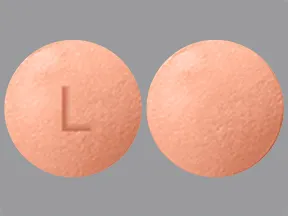 | |
| Bayer Aspirin oral - | 325 mg tablet |  | |
| aspirin oral - | 81 mg chewable tablet | 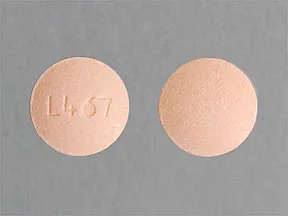 | |
| aspirin oral - | 81 mg chewable tablet | 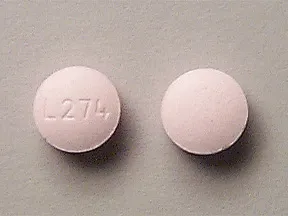 | |
| aspirin oral - | 325 mg tablet |  | |
| aspirin oral - | 81 mg tablet | 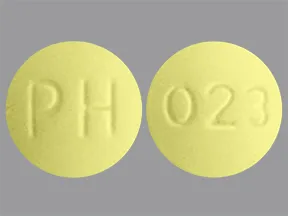 | |
| aspirin oral - | 81 mg tablet |  | |
| aspirin oral - | 81 mg tablet |  | |
| aspirin oral - | 81 mg chewable tablet |  | |
| aspirin oral - | 325 mg tablet | 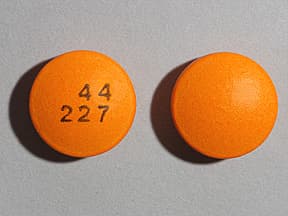 | |
| aspirin oral - | 325 mg tablet |  | |
| aspirin oral - | 325 mg tablet | 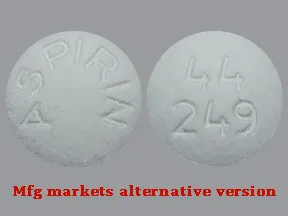 | |
| aspirin oral - | 325 mg tablet |  | |
| aspirin oral - | 81 mg tablet |  | |
| aspirin oral - | 325 mg tablet | 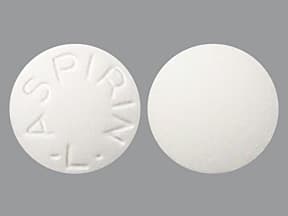 | |
| aspirin oral - | 81 mg tablet |  | |
| aspirin oral - | 81 mg tablet |  | |
| aspirin oral - | 81 mg tablet | 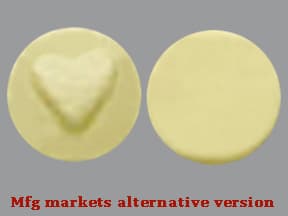 | |
| aspirin oral - | 81 mg tablet | 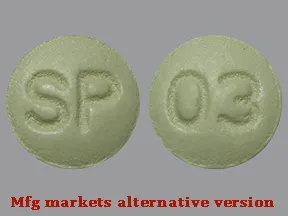 | |
| aspirin oral - | 81 mg tablet |  | |
| aspirin oral - | 81 mg tablet |  | |
| aspirin oral - | 325 mg tablet | 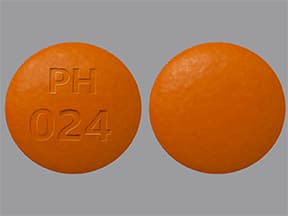 | |
| aspirin oral - | 325 mg tablet | 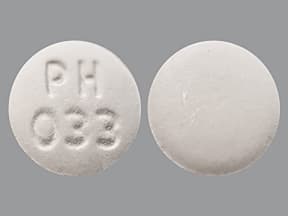 | |
| aspirin oral - | 81 mg chewable tablet |  | |
| aspirin oral - | 81 mg tablet | 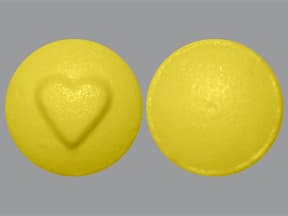 | |
| aspirin oral - | 81 mg chewable tablet |  | |
| aspirin oral - | 325 mg tablet | 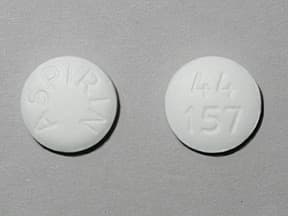 | |
| aspirin oral - | 81 mg tablet |  | |
| aspirin oral - | 325 mg tablet |  | |
| aspirin oral - | 81 mg tablet | 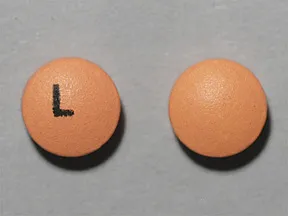 | |
| aspirin oral - | 81 mg tablet |  | |
| aspirin oral - | 81 mg tablet |  | |
| aspirin oral - | 81 mg tablet | 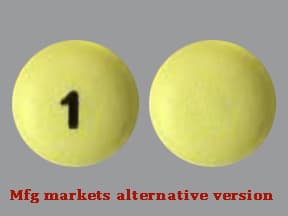 | |
| aspirin oral - | 325 mg tablet | 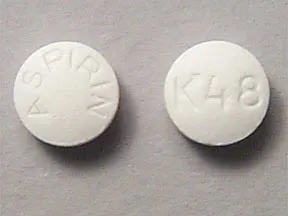 | |
| aspirin oral - | 81 mg chewable tablet | 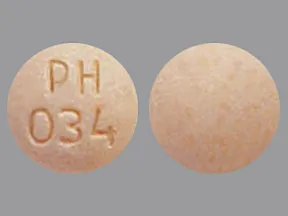 | |
| aspirin oral - | 81 mg tablet | 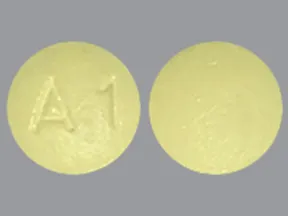 | |
| aspirin oral - | 81 mg chewable tablet | 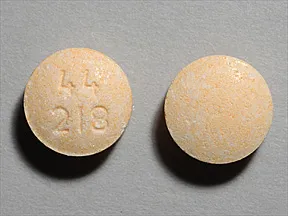 | |
| aspirin oral - | 81 mg tablet |  | |
| aspirin oral - | 81 mg chewable tablet |  | |
| aspirin oral - | 81 mg chewable tablet | 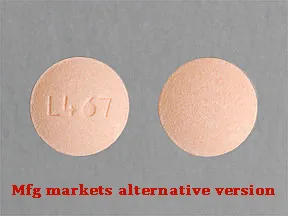 | |
| aspirin oral - | 81 mg chewable tablet | 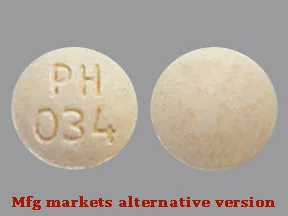 | |
| aspirin oral - | 325 mg tablet |  | |
| aspirin oral - | 325 mg tablet | 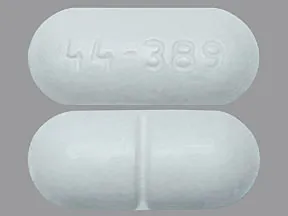 | |
| aspirin oral - | 325 mg tablet |  | |
| aspirin oral - | 325 mg tablet | 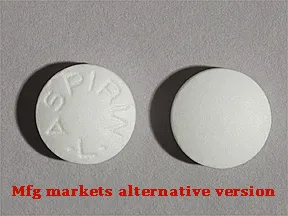 | |
| aspirin oral - | 325 mg tablet | 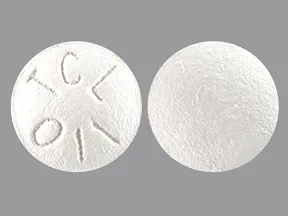 | |
| aspirin oral - | 325 mg tablet | 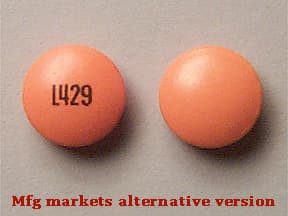 | |
| aspirin oral - | 325 mg tablet |  | |
| St Joseph Aspirin oral - | 81 mg chewable tablet |  | |
| Extra Strength Bayer oral - | 500 mg tablet | 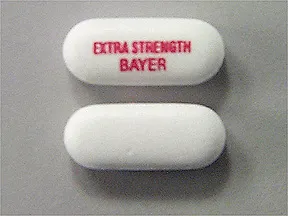 | |
| Children's Aspirin oral - | 81 mg chewable tablet |  | |
| Children's Aspirin oral - | 81 mg chewable tablet |  | |
| Bayer Chewable Low Dose Aspirin oral - | 81 mg chewable tablet | 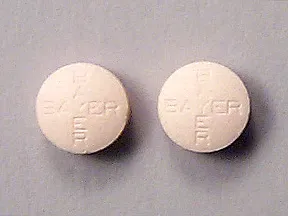 | |
| Bayer Chewable Low Dose Aspirin oral - | 81 mg chewable tablet | 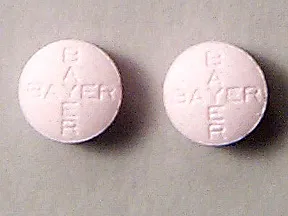 | |
| Bayer Advanced oral - | 500 mg tablet |  | |
| aspirin rectal - | 300 mg suppos | 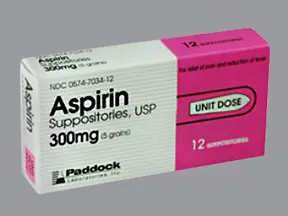 | |
| aspirin rectal - | 600 mg suppos | 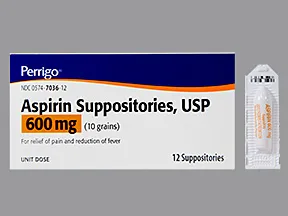 | |
| Durlaza oral - | 162.5 mg capsule | 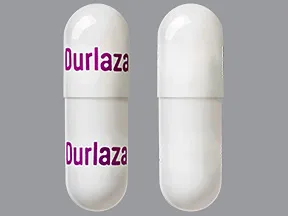 | |
| Ecotrin Low Strength oral - | 81 mg tablet | 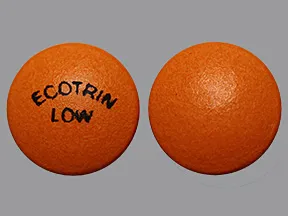 |
Copyright © 2010 First DataBank, Inc.
Patient Handout
aspirin oral
ASPIRIN CHEWABLE - ORAL
(AS-pir-in)
COMMON BRAND NAME(S): Children's Aspirin
USES: Aspirin is used to reduce fever and relieve mild to moderate pain from conditions such as muscle aches, toothaches, common cold, and headaches. It may also be used to reduce pain and swelling in conditions such as arthritis. Aspirin is known as a salicylate and a nonsteroidal anti-inflammatory drug (NSAID). It works by blocking a certain natural substance in your body to reduce pain and swelling. Consult your doctor before giving this drug to a child younger than 12 years. It is very important to keep this and all medication out of the reach of children. Aspirin is a common cause of poisoning in children. (See also Overdose section.)Your doctor may direct you to take a low dose of aspirin to prevent blood clots. This effect reduces the risk of stroke and heart attack. If you have recently had surgery on clogged arteries (such as bypass surgery, carotid endarterectomy, coronary stent), your doctor may direct you to use aspirin in low doses as a "blood thinner" to prevent blood clots. Aspirin prevents blood clots by stopping certain blood cells (platelets) from clumping together.
HOW TO USE: If you are taking this medication for self-treatment, follow all directions on the product package. If you have any questions, ask your doctor or pharmacist. If your doctor has directed you to take this medication, take it exactly as prescribed.Chew the tablet thoroughly before swallowing. This medication may also be crushed or swallowed whole. If stomach upset occurs while you are taking this medication, you may take it with food or milk.The dosage and length of treatment are based on your medical condition and response to treatment. Read the product label to find recommendations on how many tablets you can take in a 24-hour period and how long you may self-treat before seeking medical advice. Do not take more medication or take it for longer than recommended unless directed by your doctor. Use the smallest effective dose. Consult your doctor or pharmacist if you have any questions.If you are taking this medication for self-treatment of headache, get medical help right away if you also have trouble speaking, weakness on one side of the body, or sudden vision changes. Before using this drug, consult a doctor or pharmacist if you have headaches caused by head injury, coughing, or bending, or if you have a headache with vomiting that is severe or doesn't stop, fever, and stiff neck. These may be signs of serious medical conditions.If you are taking this medication as needed (not on a regular schedule), remember that pain medications work best if they are used as the first signs of pain occur. If you wait until the pain has worsened, the medicine may not work as well.You should not take this medication for self-treatment of pain for longer than 10 days. You should not use this drug to self-treat a fever that lasts longer than 3 days. In these cases, consult a doctor because you may have a more serious condition. Tell your doctor promptly if you develop ringing in the ears or difficulty hearing.If your condition lasts or gets worse (such as new or unusual symptoms, redness/swelling of the painful area, pain/fever that does not go away or gets worse) or if you think you may have a serious medical problem, tell your doctor promptly.
SIDE EFFECTS: Upset stomach and heartburn may occur. If either of these effects lasts or gets worse, tell your doctor or pharmacist promptly.If your doctor has directed you to use this medication, remember that your doctor has judged that the benefit to you is greater than the risk of side effects. Many people using this medication do not have serious side effects.Tell your doctor right away if you have any serious side effects, including: nausea/vomiting that is severe or doesn't stop, easy bruising/bleeding, difficulty hearing, ringing ears, signs of kidney problems (such as change in the amount of urine), unexplained tiredness, dizziness, dark urine, yellowing eyes/skin.This drug may rarely cause serious bleeding from the stomach/intestine or other areas of the body. If you notice any of the following very serious side effects, get medical help right away: stomach/abdominal pain that is severe or doesn't go away, black/tarry stools, vomit that looks like coffee grounds, trouble speaking, weakness on one side of the body, sudden vision changes, sudden severe headache.A very serious allergic reaction to this drug is rare. However, get medical help right away if you notice any symptoms of a serious allergic reaction, including: fever, swollen lymph nodes, rash, itching/swelling (especially of the face/tongue/throat), severe dizziness, trouble breathing.This is not a complete list of possible side effects. If you notice other effects not listed above, contact your doctor or pharmacist.In the US -Call your doctor for medical advice about side effects. You may report side effects to FDA at 1-800-FDA-1088 or at www.fda.gov/medwatch.In Canada - Call your doctor for medical advice about side effects. You may report side effects to Health Canada at 1-866-234-2345.
PRECAUTIONS: Before taking aspirin, tell your doctor or pharmacist if you are allergic to it; or to other salicylates (such as choline salicylate); or to other pain relievers or fever reducers (other NSAIDs such as ibuprofen, naproxen); or if you have any other allergies. This product may contain inactive ingredients, which can cause allergic reactions or other problems. Talk to your pharmacist for more details.If you have any of the following health problems, consult your doctor or pharmacist before using this medication: bleeding/blood-clotting disorders (such as hemophilia, vitamin K deficiency, low platelet count), kidney disease, liver disease, stomach problems (such as ulcers, heartburn, stomach pain), aspirin-sensitive asthma (a history of worsening breathing with runny/stuffy nose after taking aspirin or other NSAIDs), growths in the nose (nasal polyps), gout, certain enzyme deficiencies (pyruvate kinase or G6PD deficiency).This medicine may cause stomach bleeding. Daily use of alcohol and tobacco, especially when combined with this product, may increase your risk for this side effect. Limit alcoholic beverages, and stop smoking. Check with your doctor or pharmacist for more information.Before having surgery, tell your doctor or dentist about all the products you use (including prescription drugs, nonprescription drugs, and herbal products).Children and teenagers less than 18 years old should not take aspirin if they have chickenpox, flu, or any undiagnosed illness or if they have recently received a vaccine. In these cases, taking aspirin increases the risk of Reye's syndrome, a rare but serious illness. Tell your doctor promptly if you see changes in behavior with nausea and vomiting. This may be an early sign of Reye's syndrome.Older adults may be more sensitive to the side effects of this drug, especially stomach/intestinal bleeding and ulcers.During pregnancy, this medication should be used only when clearly needed. Aspirin is not recommended for use to treat pain or fever during pregnancy. In some cases, low-dose aspirin (usually 81-162 milligrams a day) may be used safely during pregnancy to prevent certain conditions. Talk to your doctor for more details..Aspirin passes into breast milk. When used in large amounts (such as to treat pain or fever), it may harm a nursing infant and breastfeeding is not recommended while using this medication. However, low-dose aspirin for heart attack or stroke prevention may be used if directed by your doctor. Consult your doctor before breastfeeding.
DRUG INTERACTIONS: Drug interactions may change how your medications work or increase your risk for serious side effects. This document does not contain all possible drug interactions. Keep a list of all the products you use (including prescription/nonprescription drugs and herbal products) and share it with your doctor and pharmacist. Do not start, stop, or change the dosage of any medicines without your doctor's approval.Some products that may interact with this drug include: acetazolamide, other "blood thinners" (such as warfarin, heparin), corticosteroids (such as prednisone), dichlorphenamide, herbal medications (such as ginkgo biloba), ketorolac, methotrexate, mifepristone, valproic acid.Before using this product, consult your doctor if you have recently received certain live vaccines (such as varicella vaccine, live flu vaccine).Check all prescription and nonprescription medicine labels carefully since many medications contain pain relievers/fever reducers known as NSAIDs (non-steroidal anti-inflammatory drugs such as ibuprofen, naproxen). To prevent an overdose of aspirin, read the labels carefully before taking other pain relievers or cold products to make sure they do not contain aspirin. Ask your pharmacist about using these products safely.Daily use of NSAIDs (such as ibuprofen) may decrease aspirin's ability to prevent heart attack/stroke. If you are taking low-dose aspirin for prevention of heart attack/stroke, consult your doctor or pharmacist for more details and to discuss other possible treatments (such as acetaminophen) for your pain/fever.This medication may interfere with certain lab tests (such as certain urine sugar tests), possibly causing false test results. Make sure lab personnel and all your doctors know you use this drug.
OVERDOSE: If someone has overdosed and has serious symptoms such as passing out or trouble breathing, call 911. Otherwise, call a poison control center right away. US residents can call their local poison control center at 1-800-222-1222. Canada residents can call a provincial poison control center. Symptoms of overdose may include: burning pain in the throat/stomach, confusion, mental/mood changes, fainting, weakness, ringing in the ears, fever, rapid breathing, change in the amount of urine, seizures, loss of consciousness.
NOTES: If you use this medication regularly or at high doses, lab and/or medical tests (such as liver/kidney function, blood count, salicylate level) may be done while you are taking this medication. Keep all medical and lab appointments. Consult your doctor for more details.There are many different aspirin products. Some have special coatings and some are long-acting. Ask your doctor or pharmacist to recommend the best product for you.
MISSED DOSE: If your doctor directs you to take this drug on a regular schedule (not just "as needed") and you miss a dose, take it as soon as you remember. If it is near the time of the next dose, skip the missed dose. Take your next dose at the regular time. Do not double the dose to catch up.
STORAGE: Store at room temperature away from moisture and light. Different brands of this medication may have different storage needs. Check the product package for instructions on how to store your brand, or ask your pharmacist. Do not store in the bathroom. Do not use any aspirin product that has a strong vinegar-like smell. Keep all medications away from children and pets.Do not flush medications down the toilet or pour them into a drain unless instructed to do so. Properly discard this product when it is expired or no longer needed. Consult your pharmacist or local waste disposal company.
Information last revised November 2023. Copyright(c) 2024 First Databank, Inc.
IMPORTANT: HOW TO USE THIS INFORMATION: This is a summary and does NOT have all possible information about this product. This information does not assure that this product is safe, effective, or appropriate for you. This information is not individual medical advice and does not substitute for the advice of your health care professional. Always ask your health care professional for complete information about this product and your specific health needs.
Formulary
Adding plans allows you to compare formulary status to other drugs in the same class.
To view formulary information first create a list of plans. Your list will be saved and can be edited at any time.
Adding plans allows you to:
- View the formulary and any restrictions for each plan.
- Manage and view all your plans together – even plans in different states.
- Compare formulary status to other drugs in the same class.
- Access your plan list on any device – mobile or desktop.






